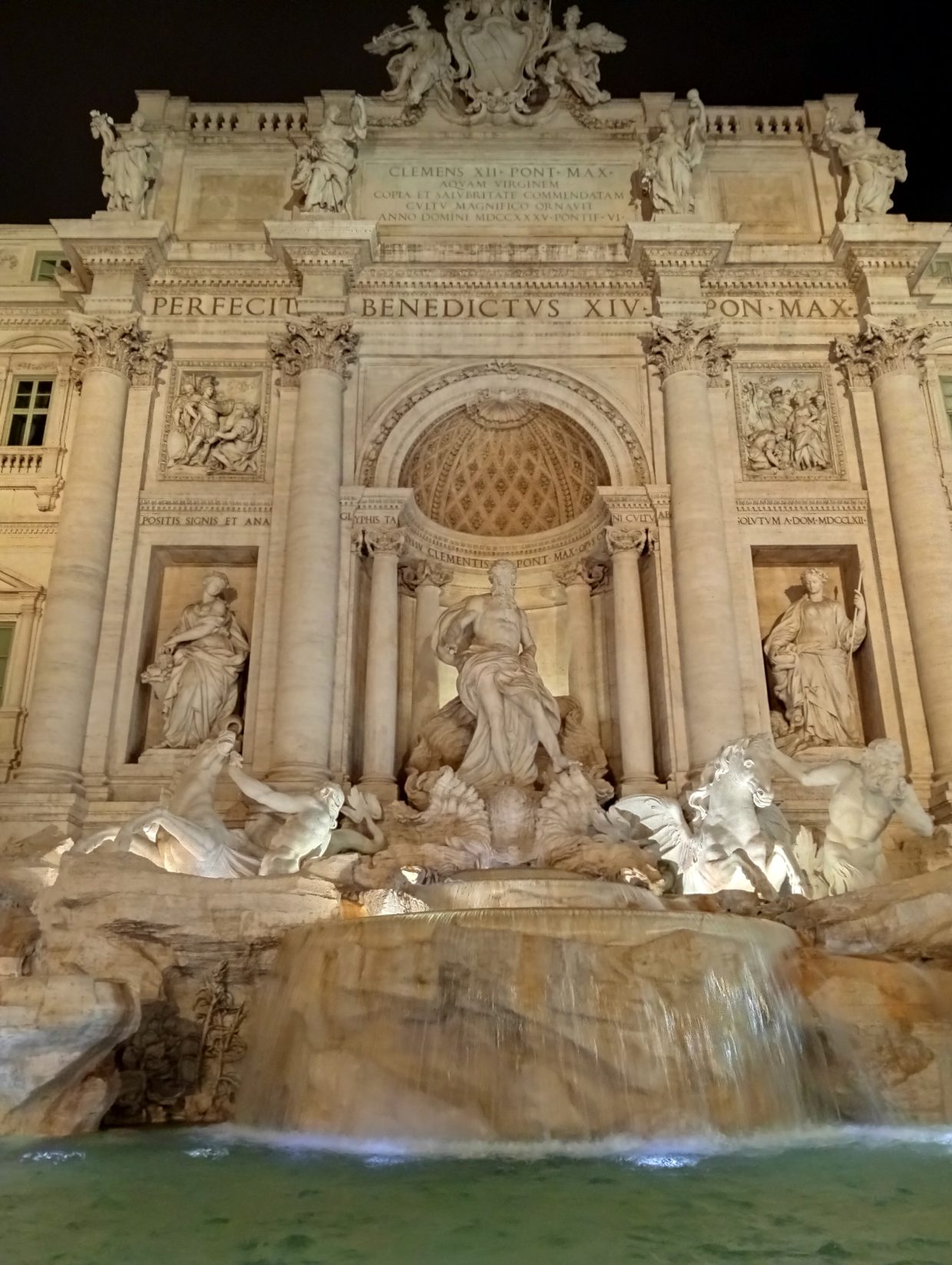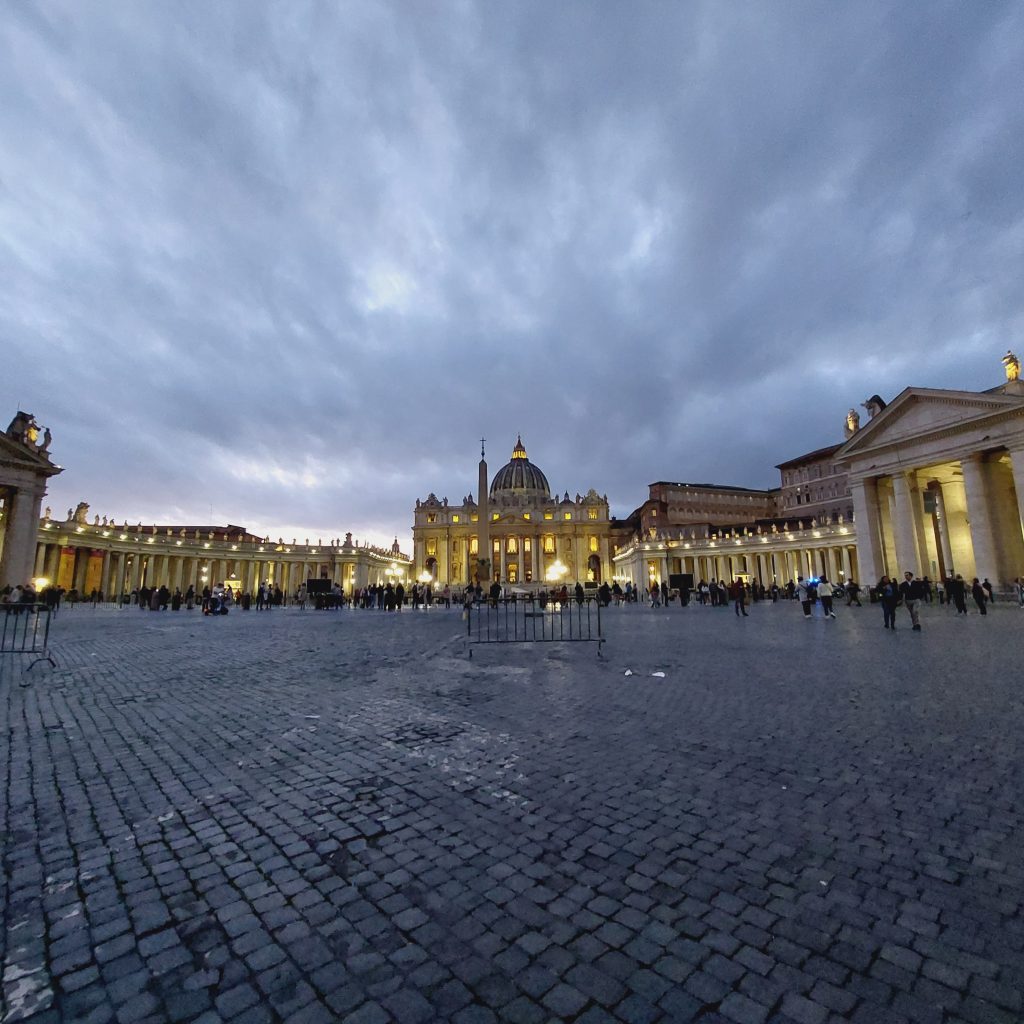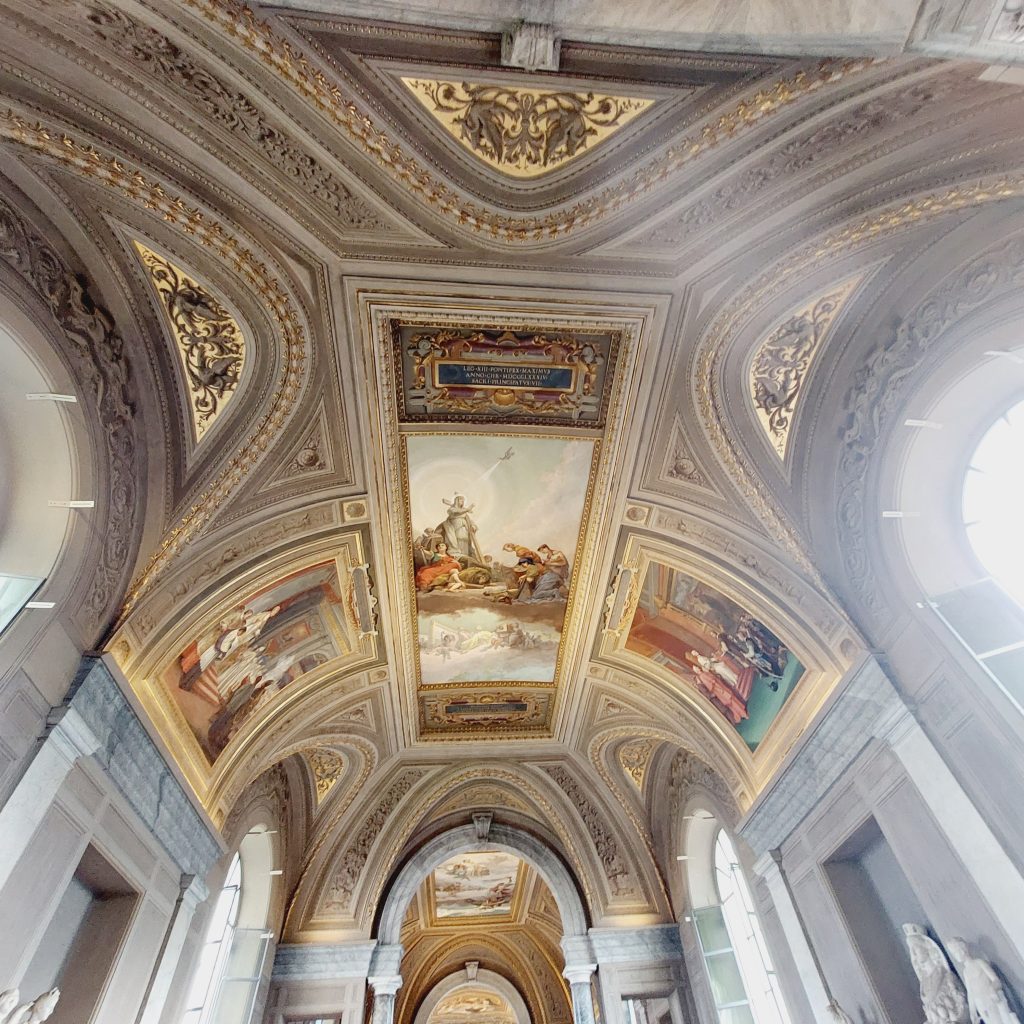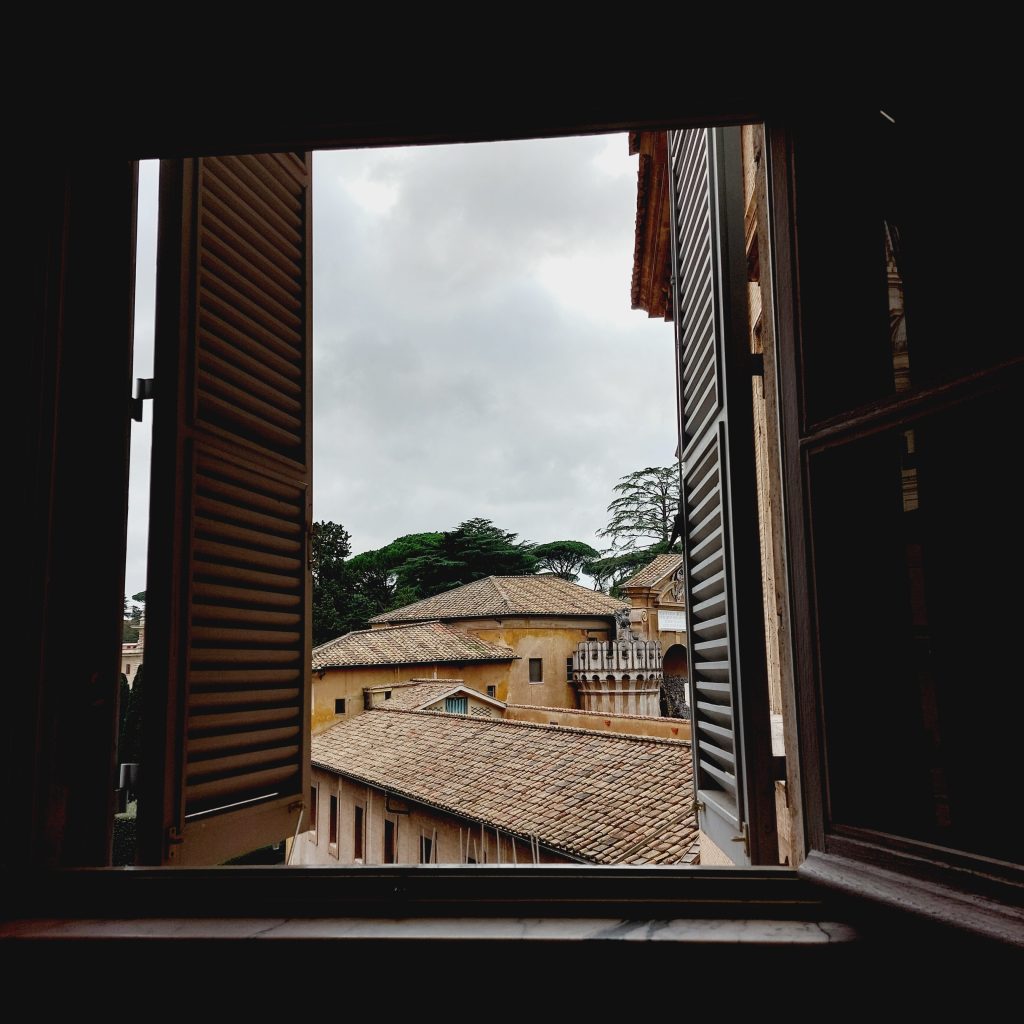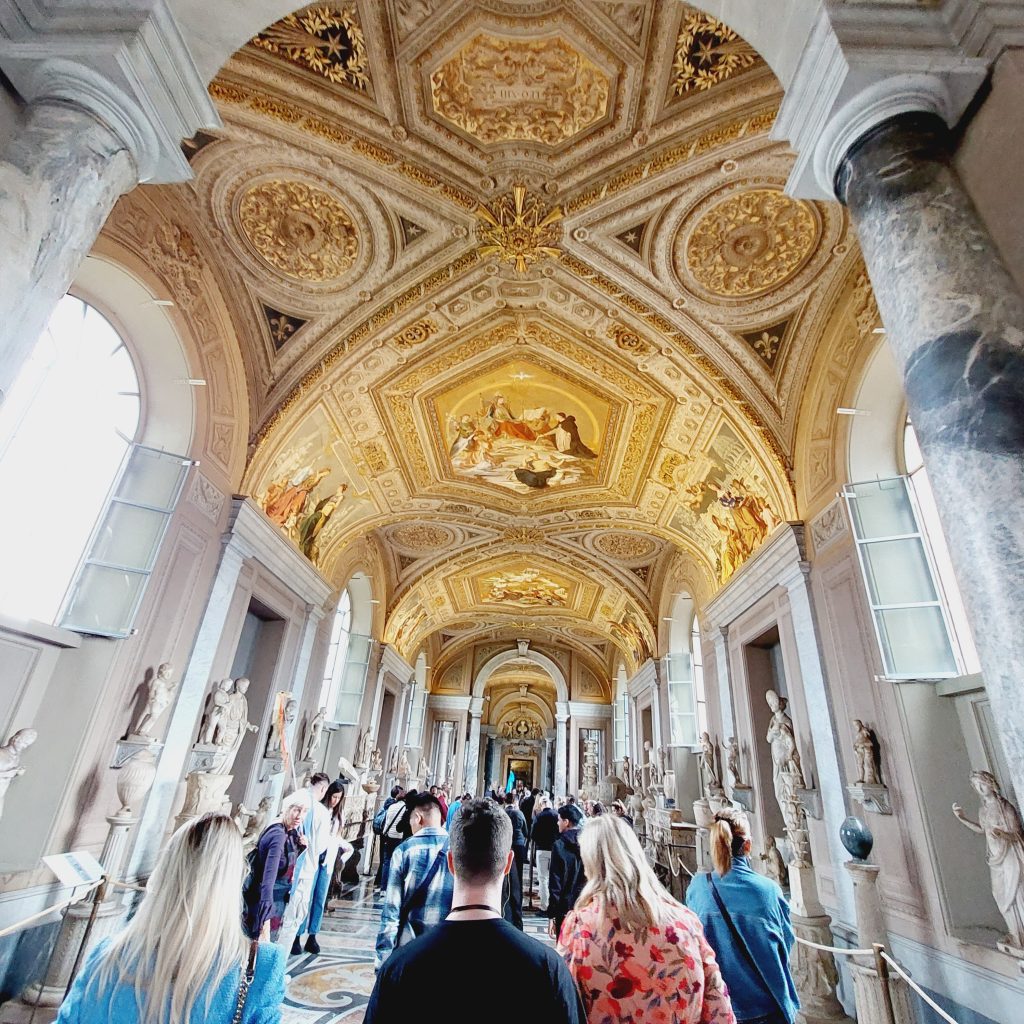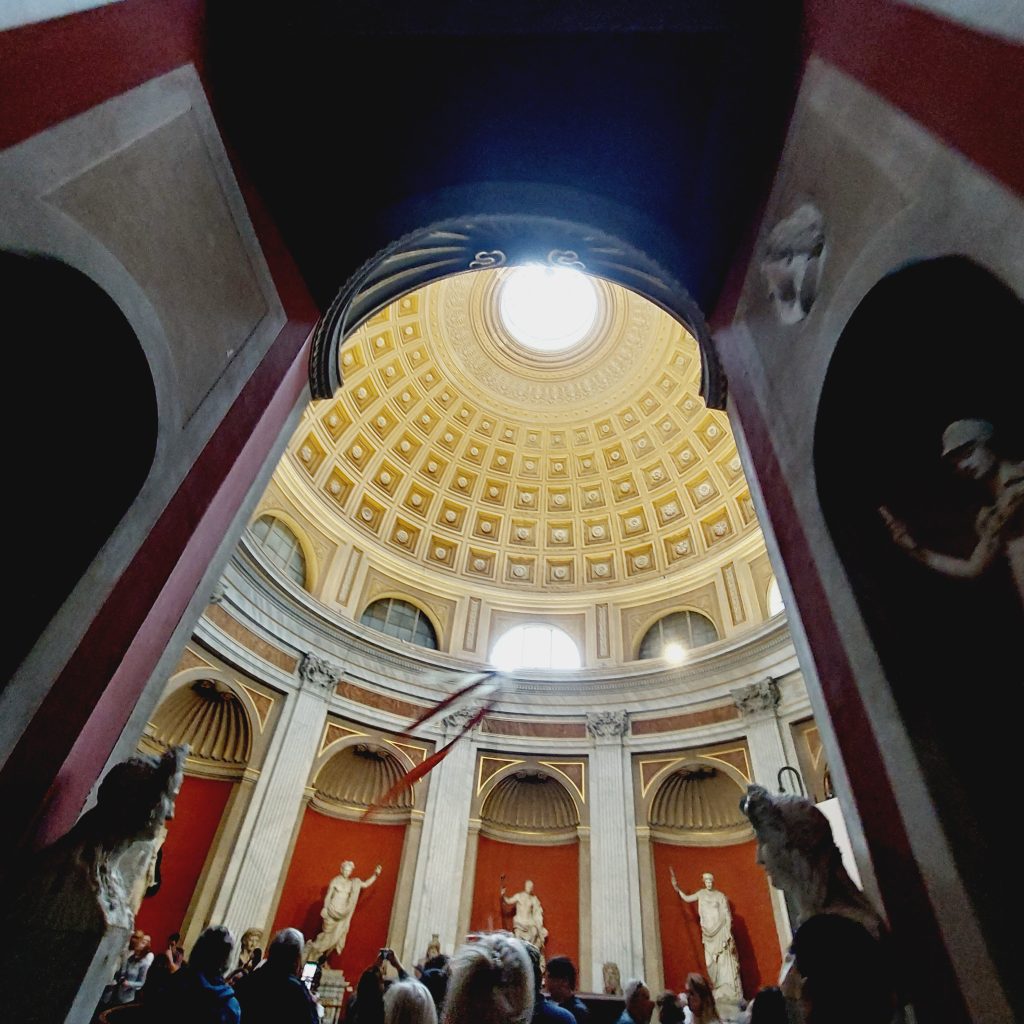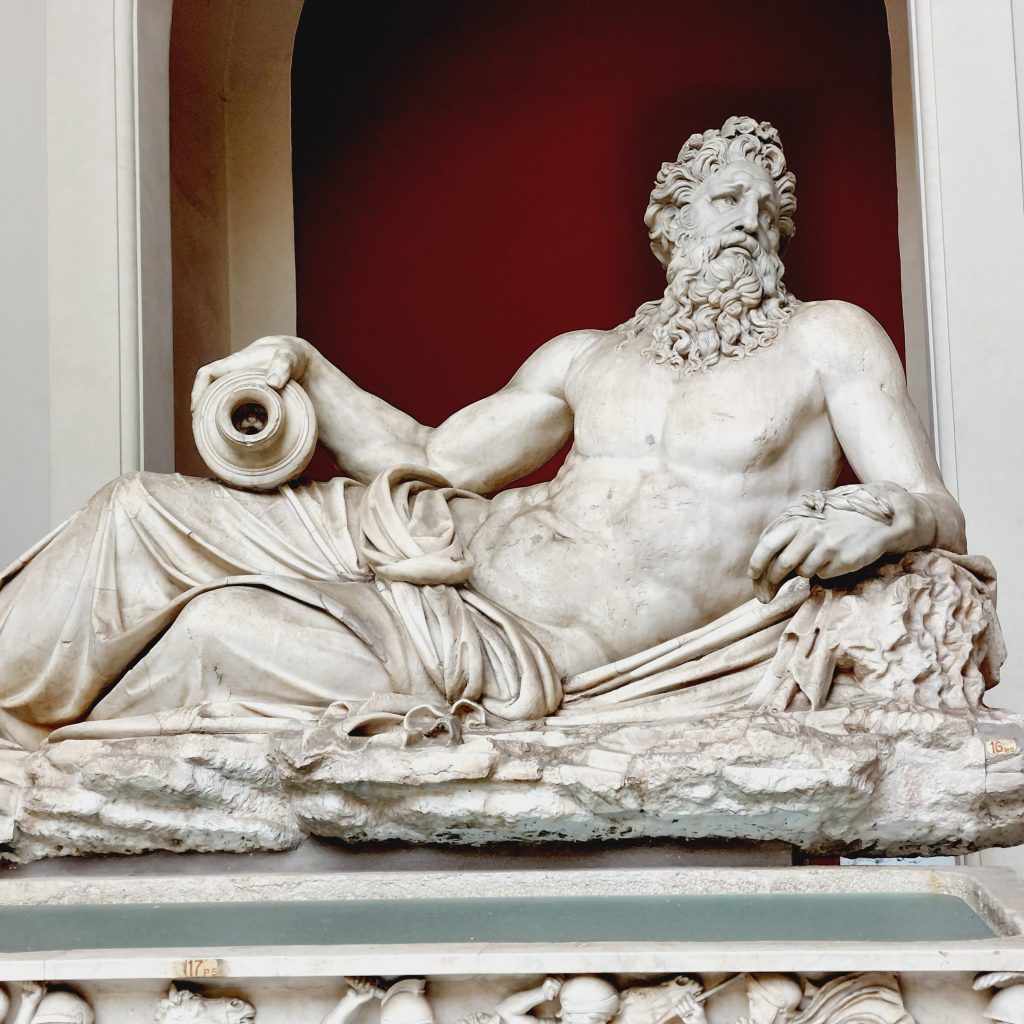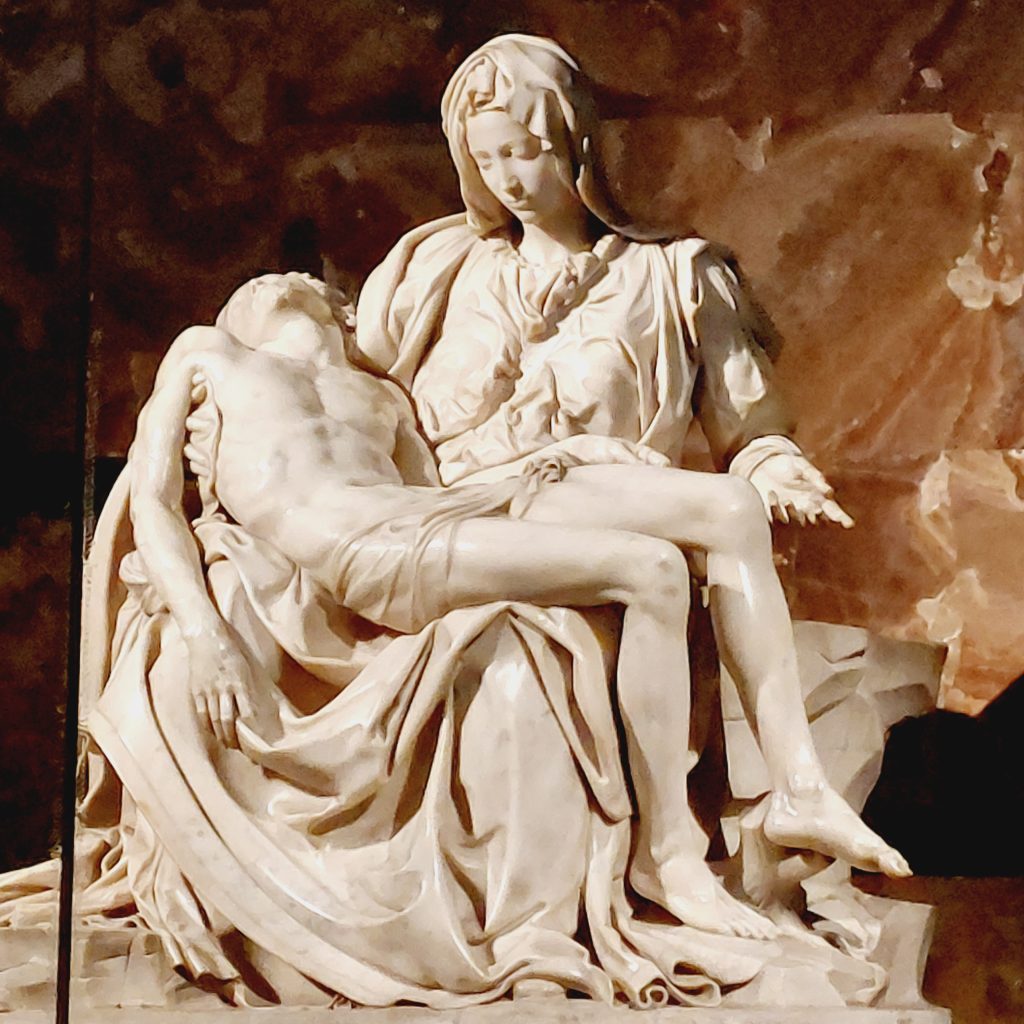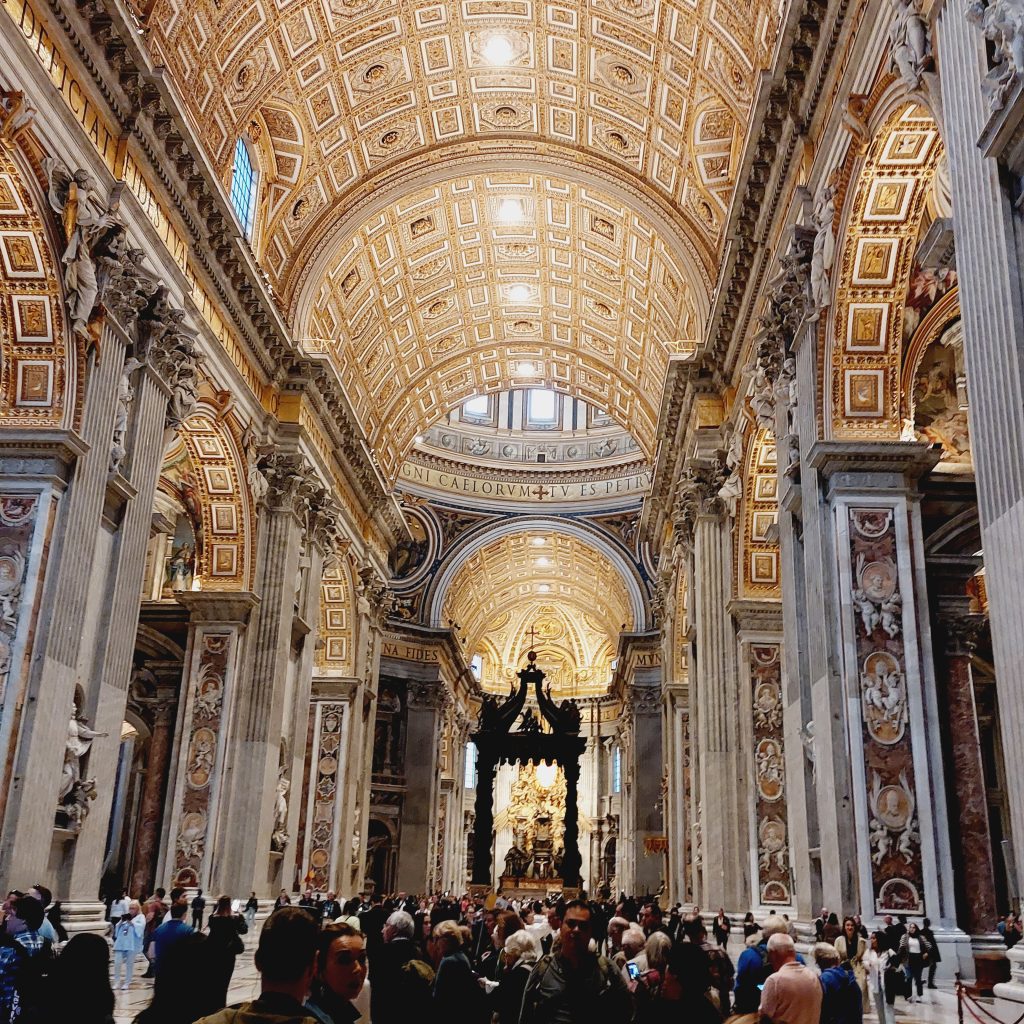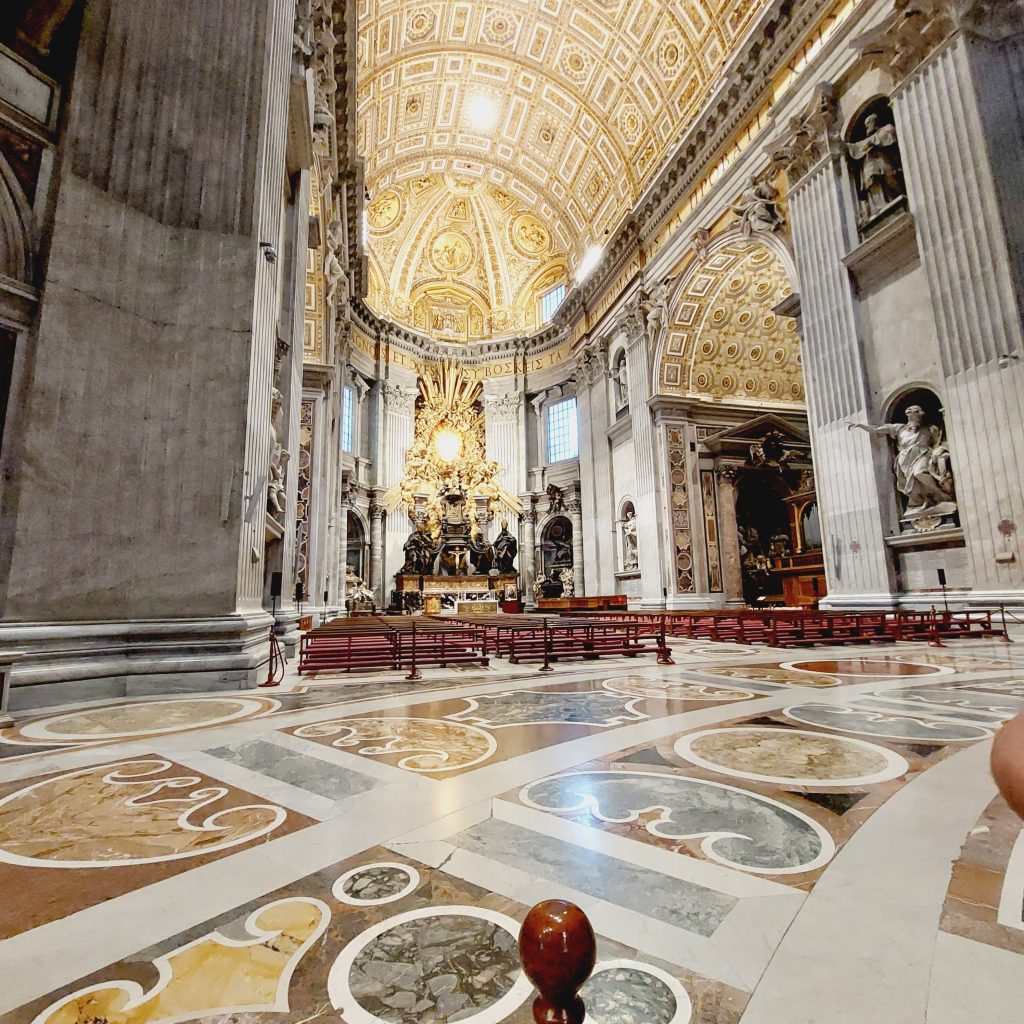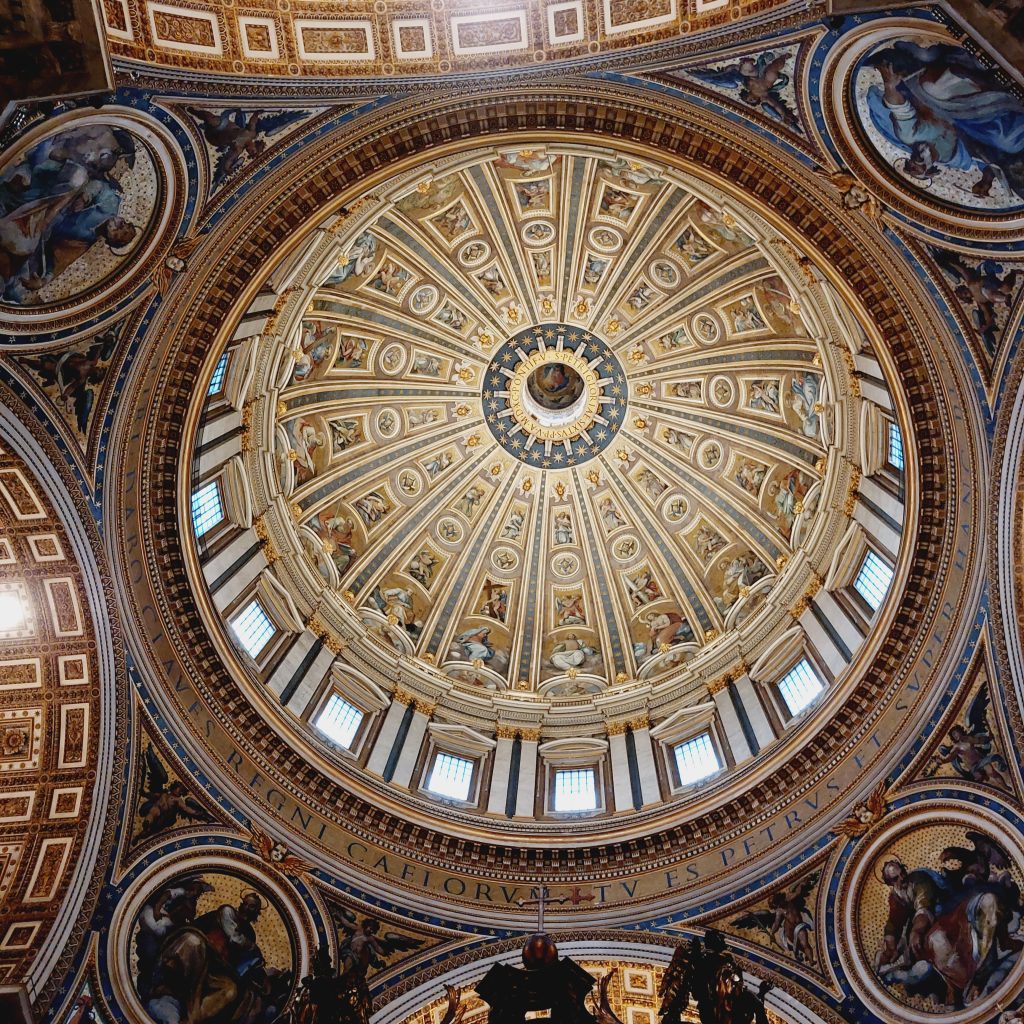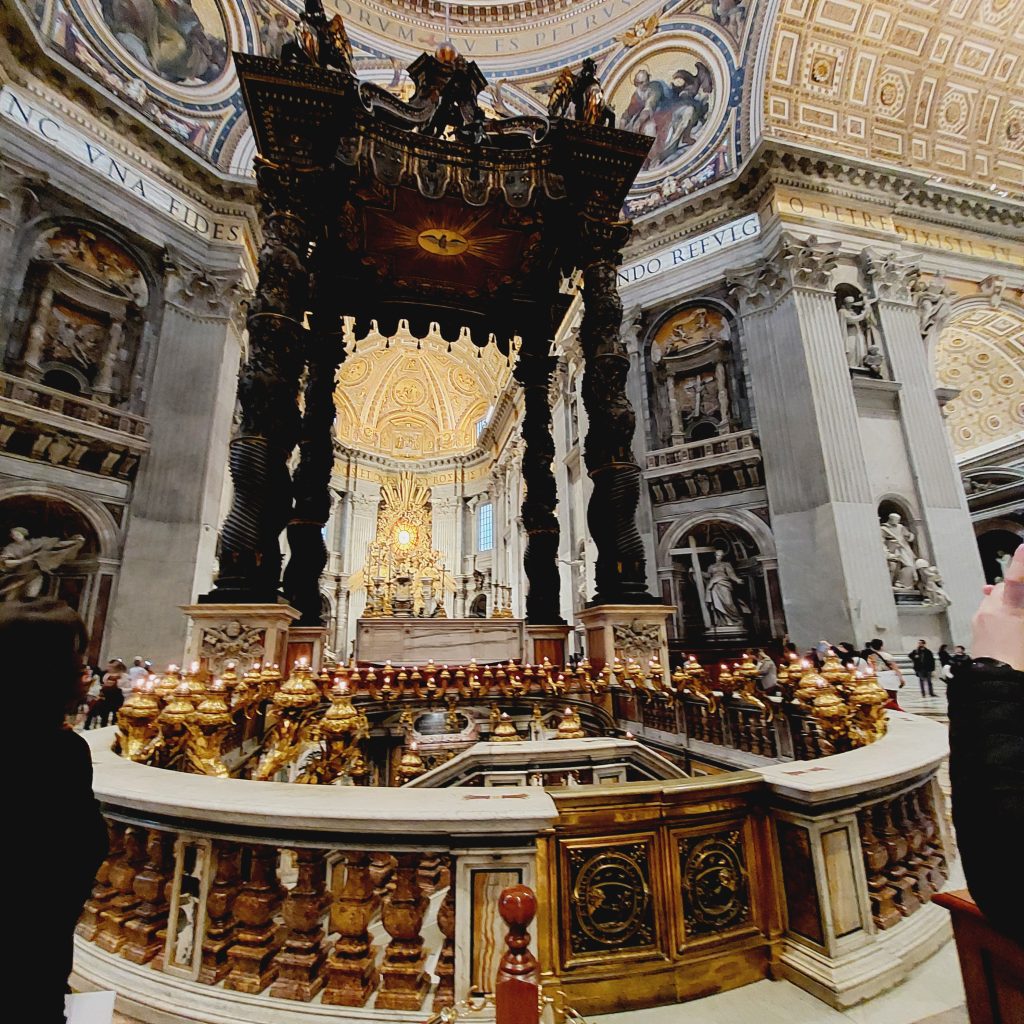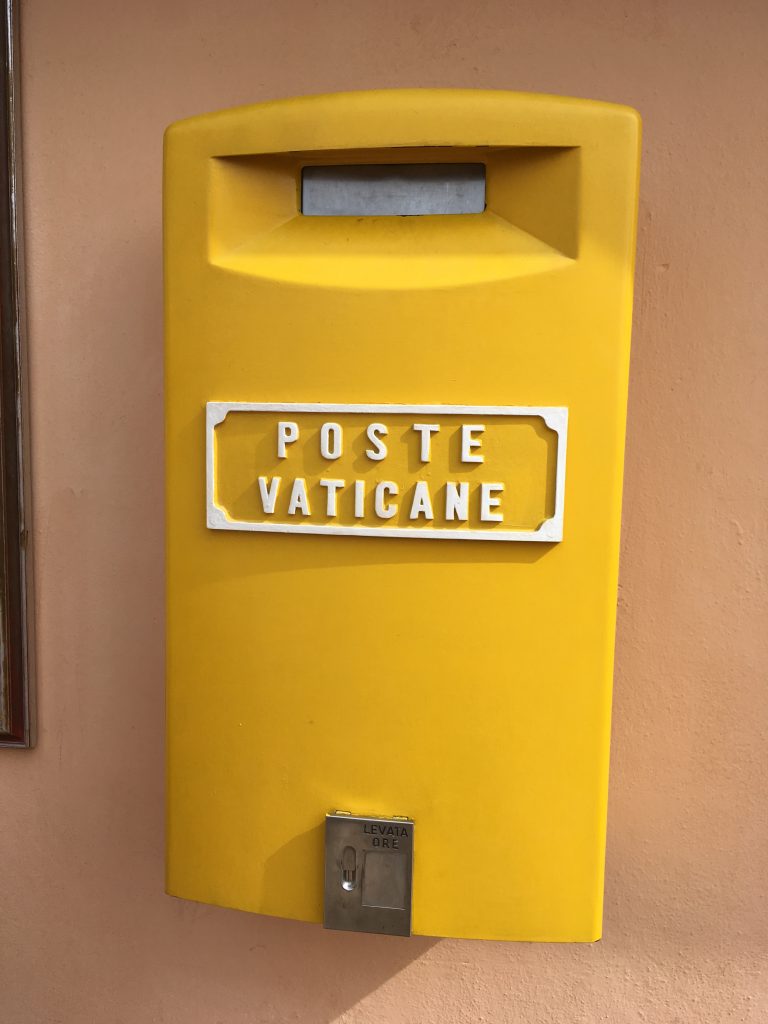Rome is an attractive city for history enthusiasts, offering a sprawling landscape with ancient landmarks. Some of these landmarks are over two thousand years old. Only a small portion of Rome has been excavated (some say 10%), while most of the ancient Roman world lies in waiting under the street surfaces.
It doesn’t matter if you are here for four days or four weeks, it is never going to be enough. Your first visit will always feel like you’ve just scratched the surface. If you are short on time, you can create your itinerary with the following places of interest.
Vatican City
A trip to Rome would be kind of incomplete without a trip to the Vatican city. When compared to Rome, the pace is slower in this part of town and people are much friendlier. All the nuns and the priests who walked past, greeted me with a warm smile.
A visit to the Vatican museums and St. Peter’s Basilica can be done alone or with a tour guide. There are pros and cons to both ways. You will need at least a day to spend in the Vatican city.
Did you know that St. Peter’s Basilica has the third tallest dome in the world? Well, now you do. (see image 10).
I would advise you prep up on your knowledge of the Sistine chapel ceiling, which narrates from the Book of Genesis, so that you know what to look out for when inside the chapel. The most famous illustration at the centre of the ceiling is of course, the creation of Adam.
As you should know photography isn’t allowed inside the chapel and so having a strong memory core is vital. The moment I left the chapel, I forgot everything that I saw. It is quite a dark room, with lots of people standing around staring up at the ceiling, and some sitting on the benches at the far end of the chapel.
Don’t forget to send your loved ones a postcard from the Vatican. Vatican city has its own postal service and issues their own stamps. So, it’s a pretty cool thing to do and can be considered a souvenir gift to your loved ones. If you are a stamp collector, then you will enjoy adding this to your collection.
Trevi Fountain
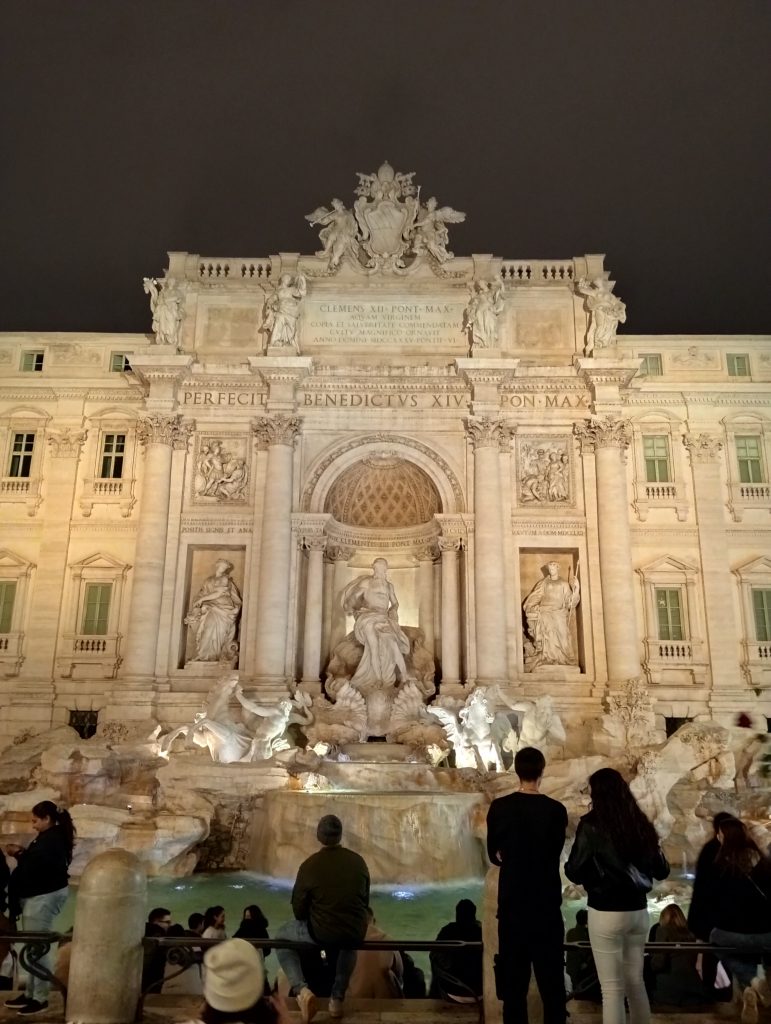
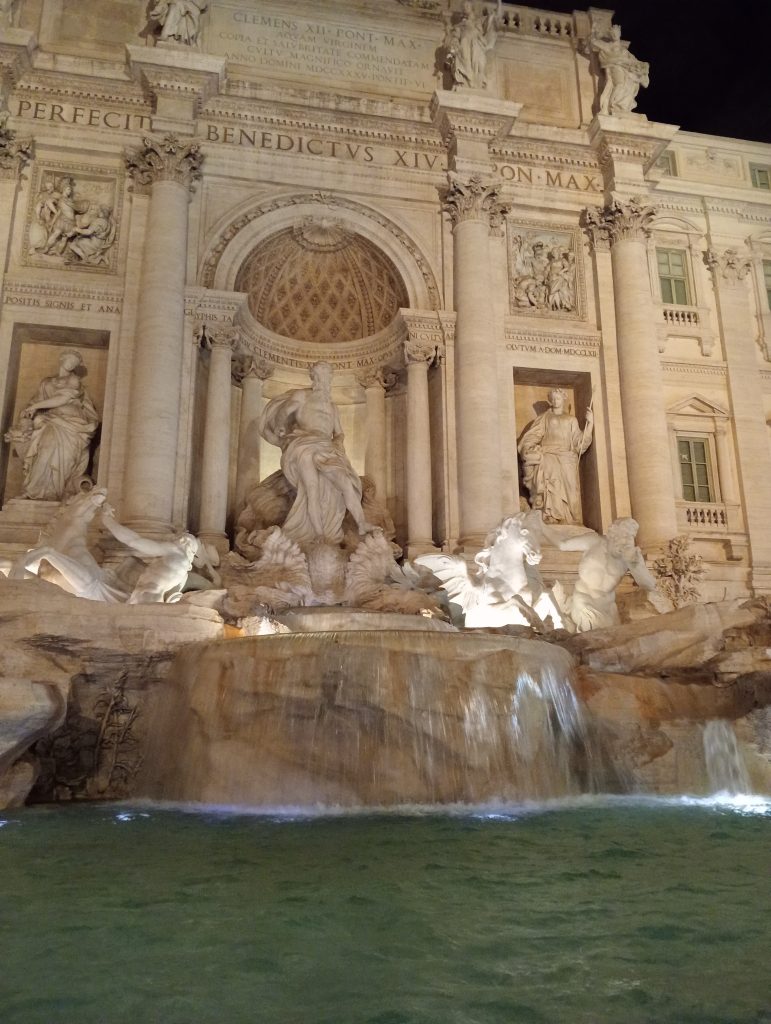
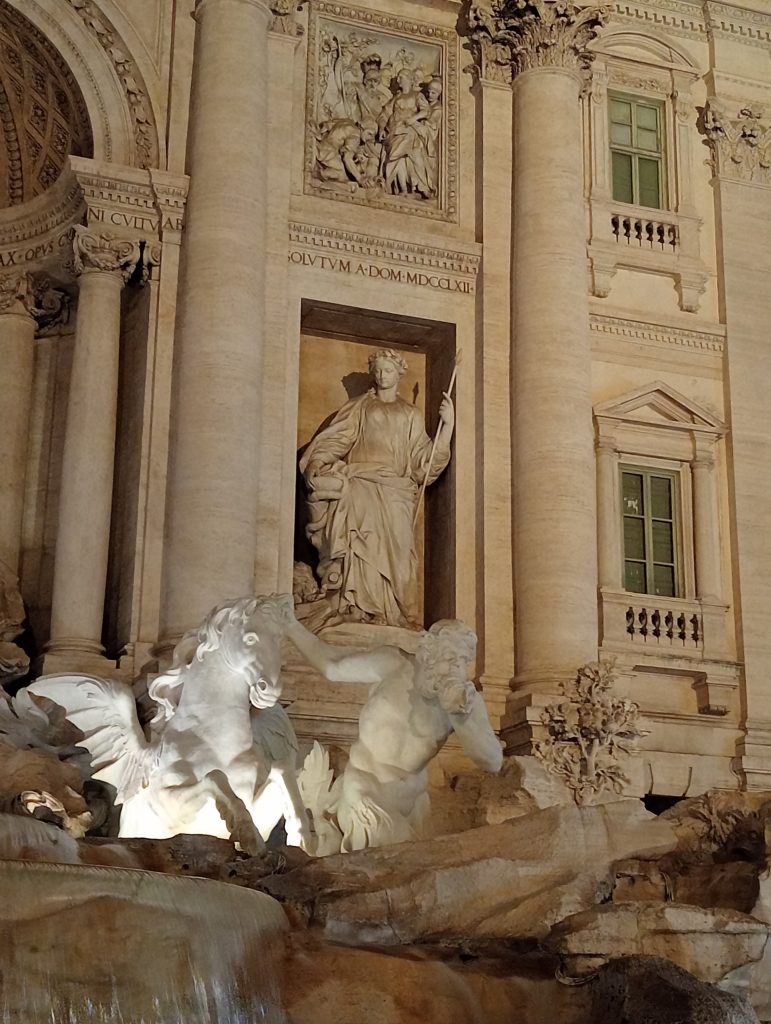
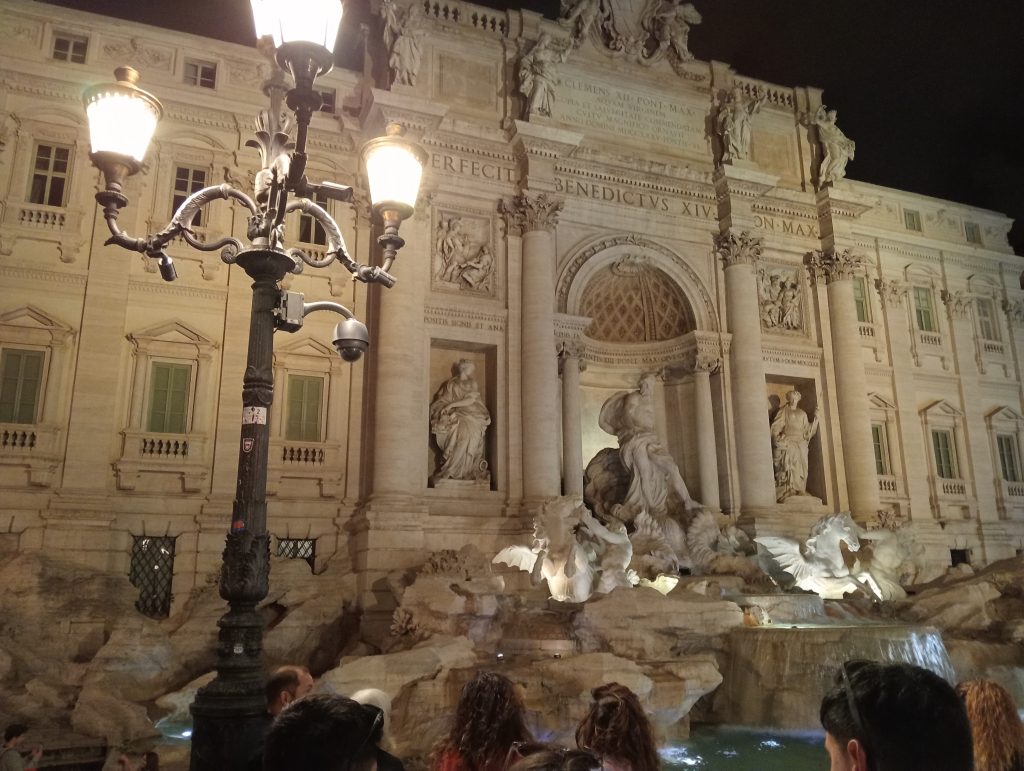
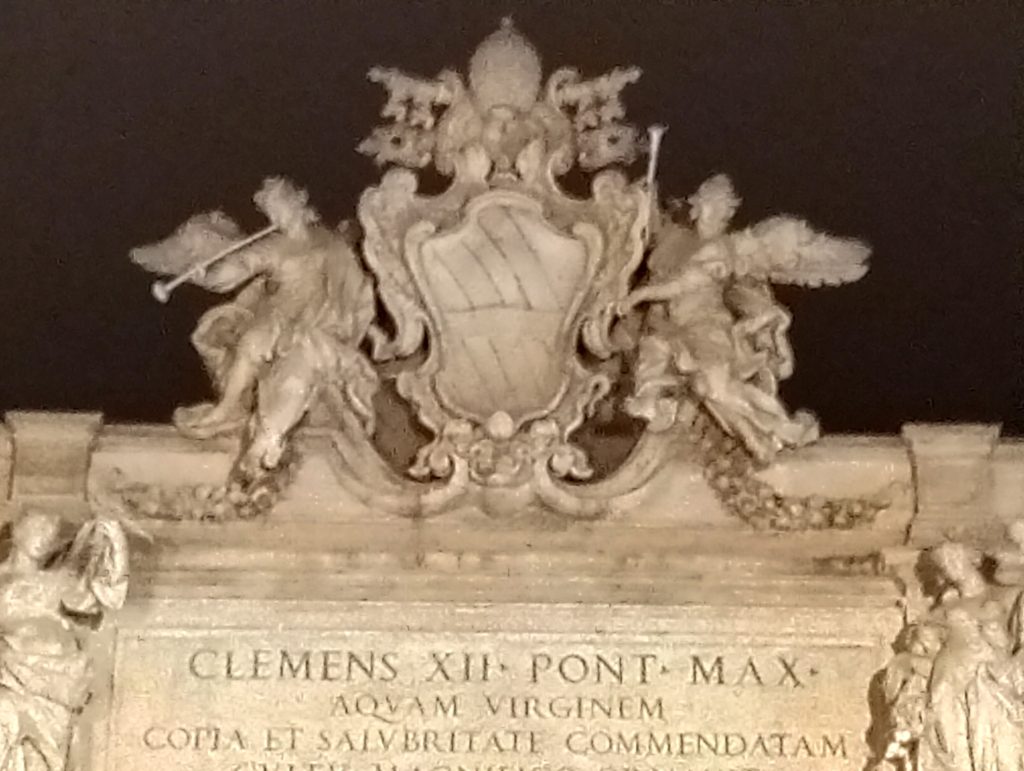
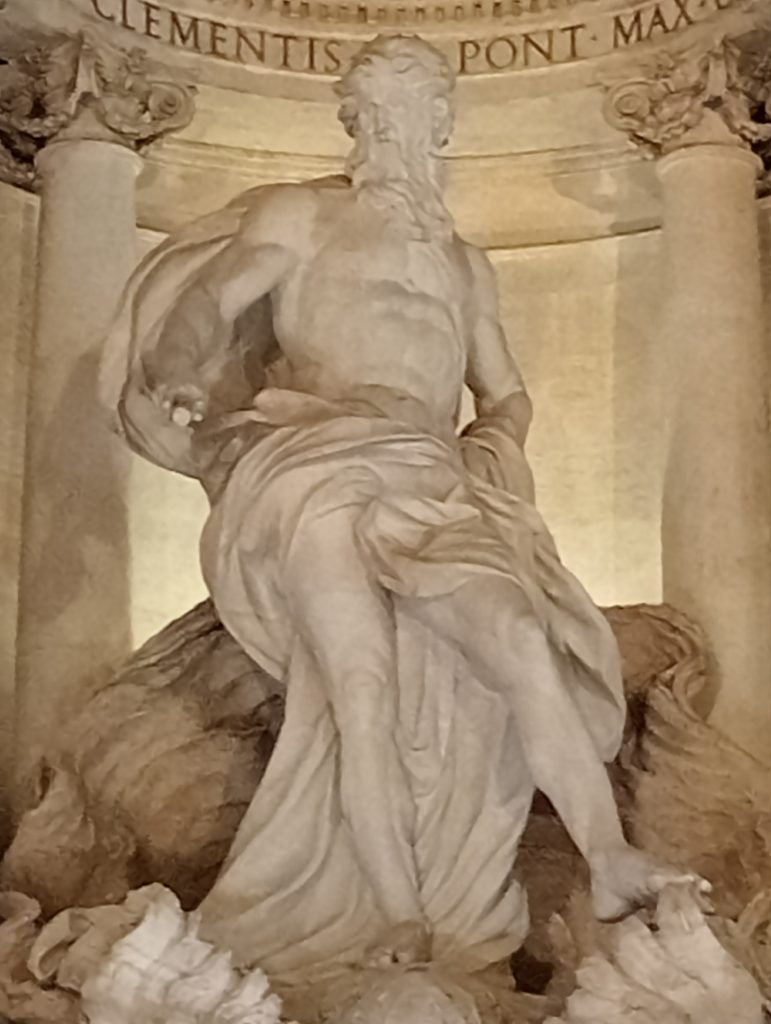
It is one of the oldest water sources in Rome and a popular tourist destination. There is a tradition of throwing a coin into the fountain, which then get collected by the fountain cleaners and the money is distributed to the charities. That’s millions of euros collected each year. It sure is so stunning in the evenings when the lights are on. The marble work looks luminous against the night light.
Trevi fountain is the busiest working landmark in Rome, fending off hordes of tourists from falling into the water. If it wasn’t for the law, people would be swimming in there. It certainly draws a crowd like moths to a flame.
Be prepared to see a huge crowd, elbow to elbow with one another. Don’t be afraid to cut through the crowd to get to the front. People won’t move, but will let you through.
As it is heavily crowded, it is in your best interest to guard your belongings at all times.
Colosseum
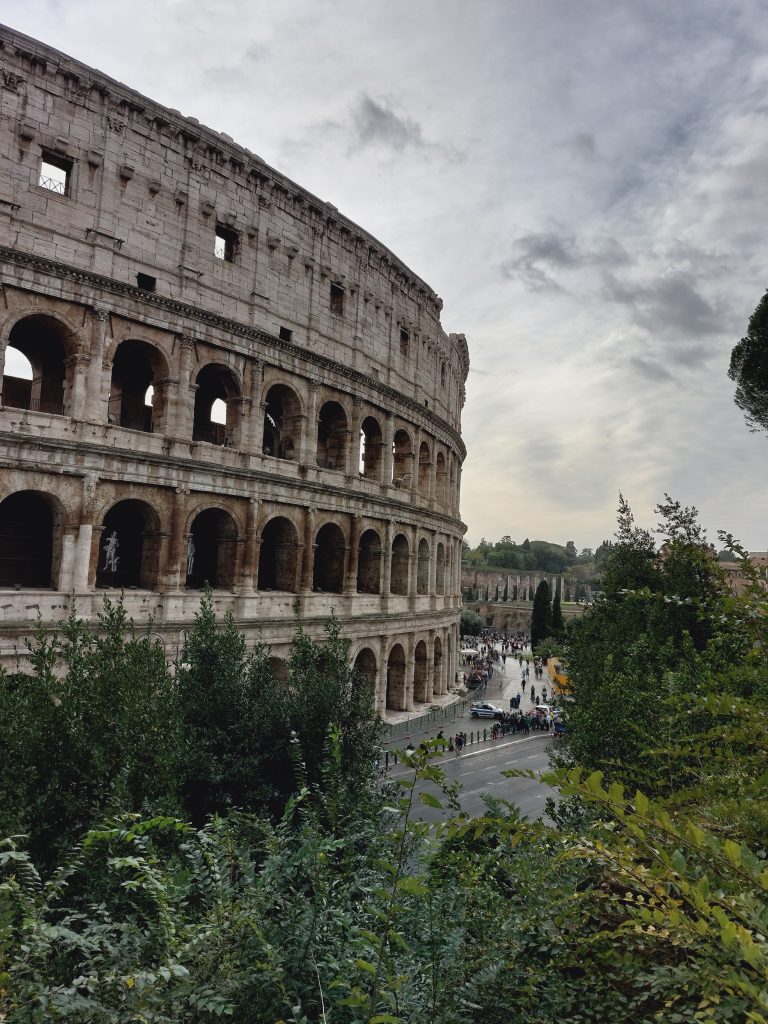
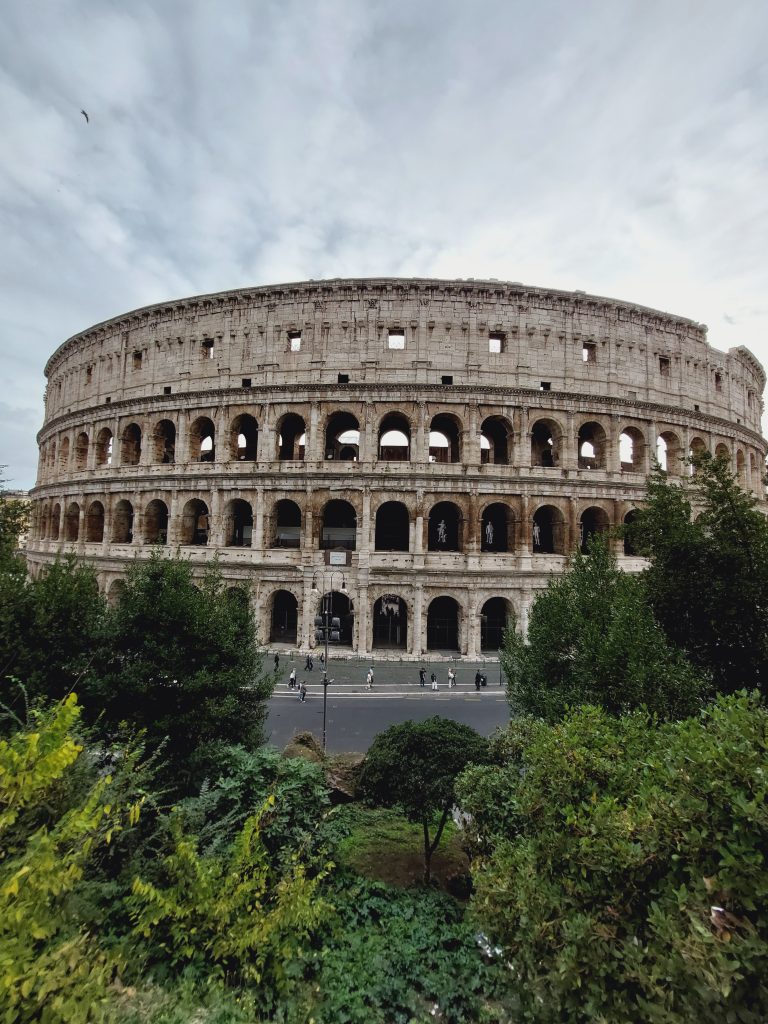
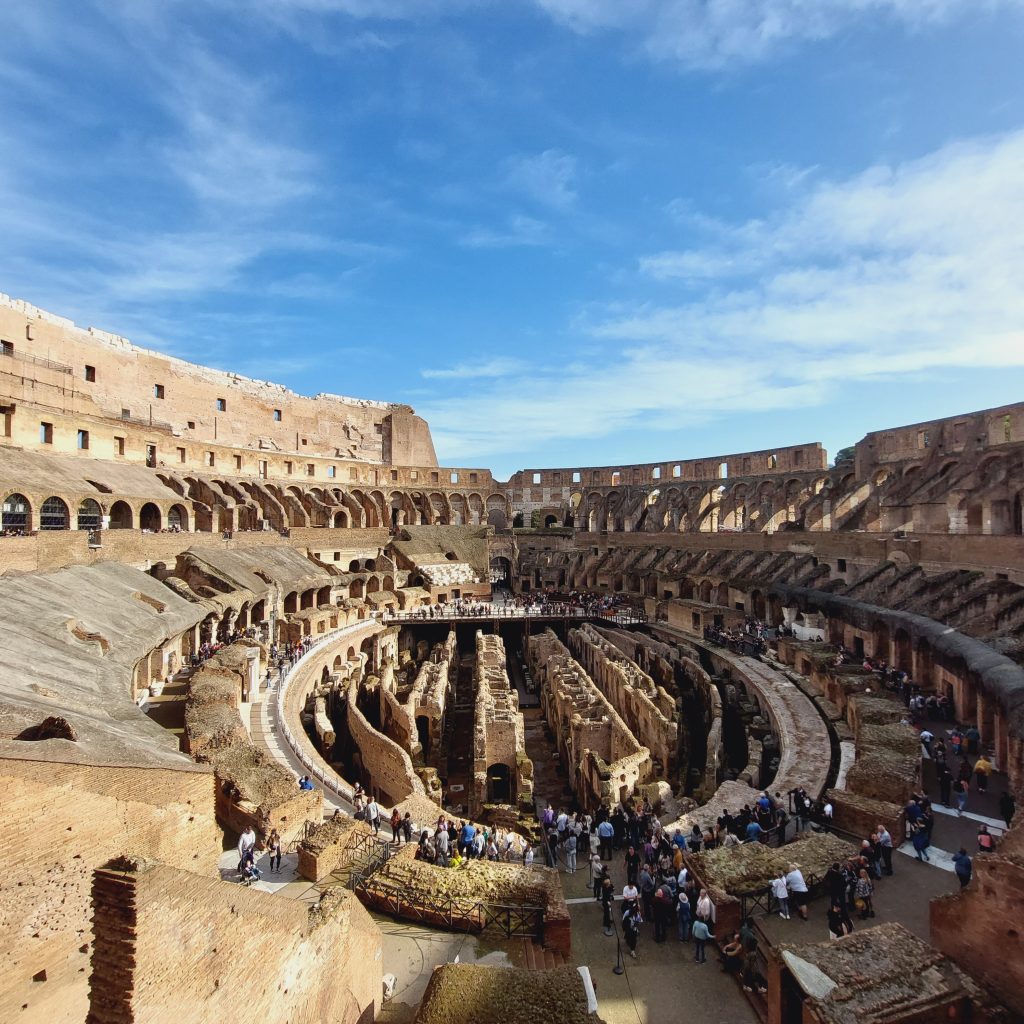
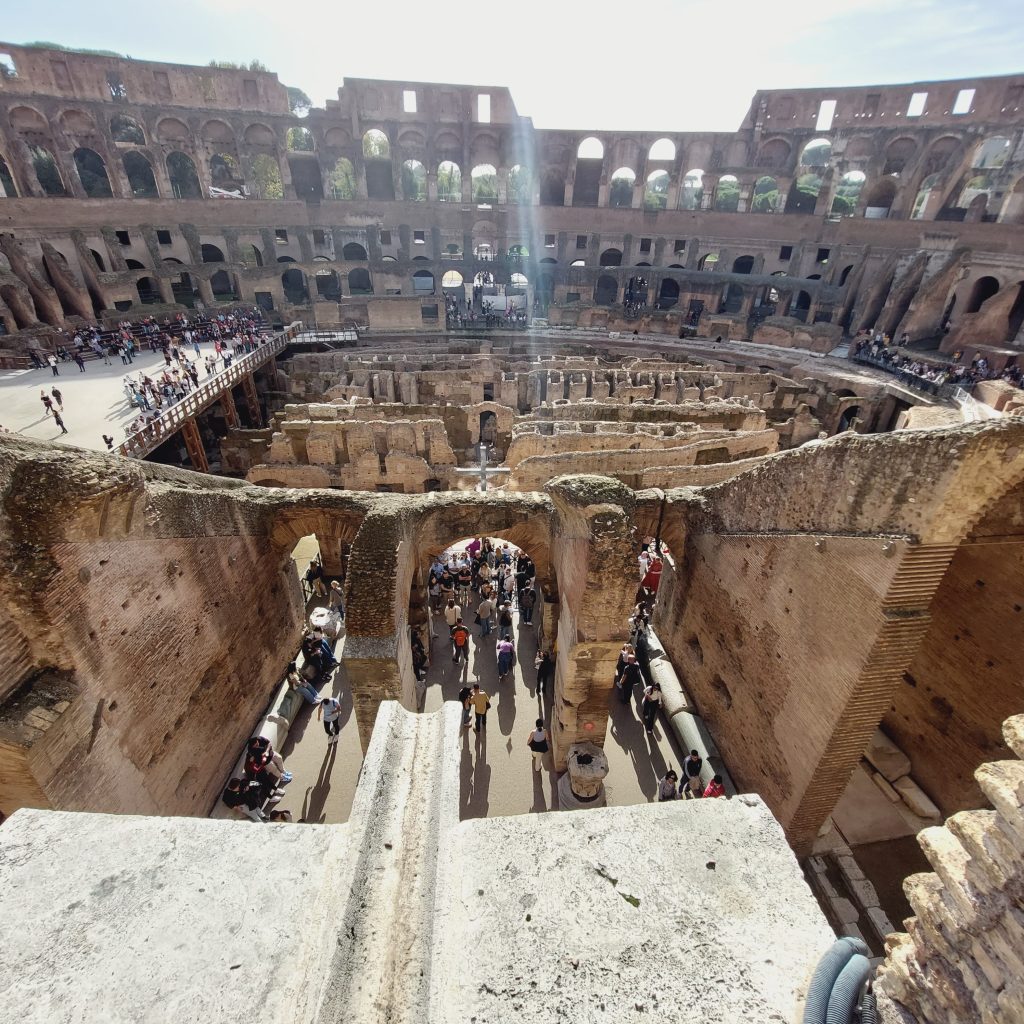
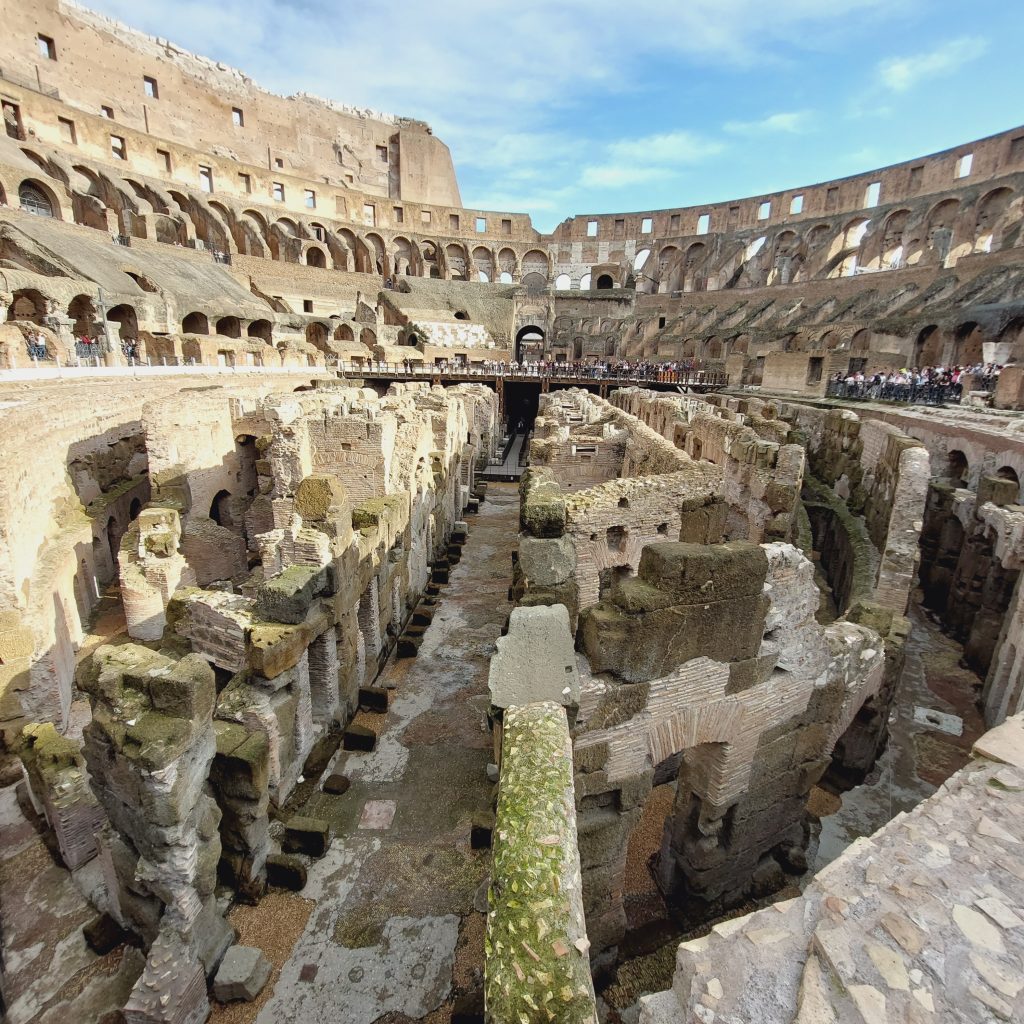
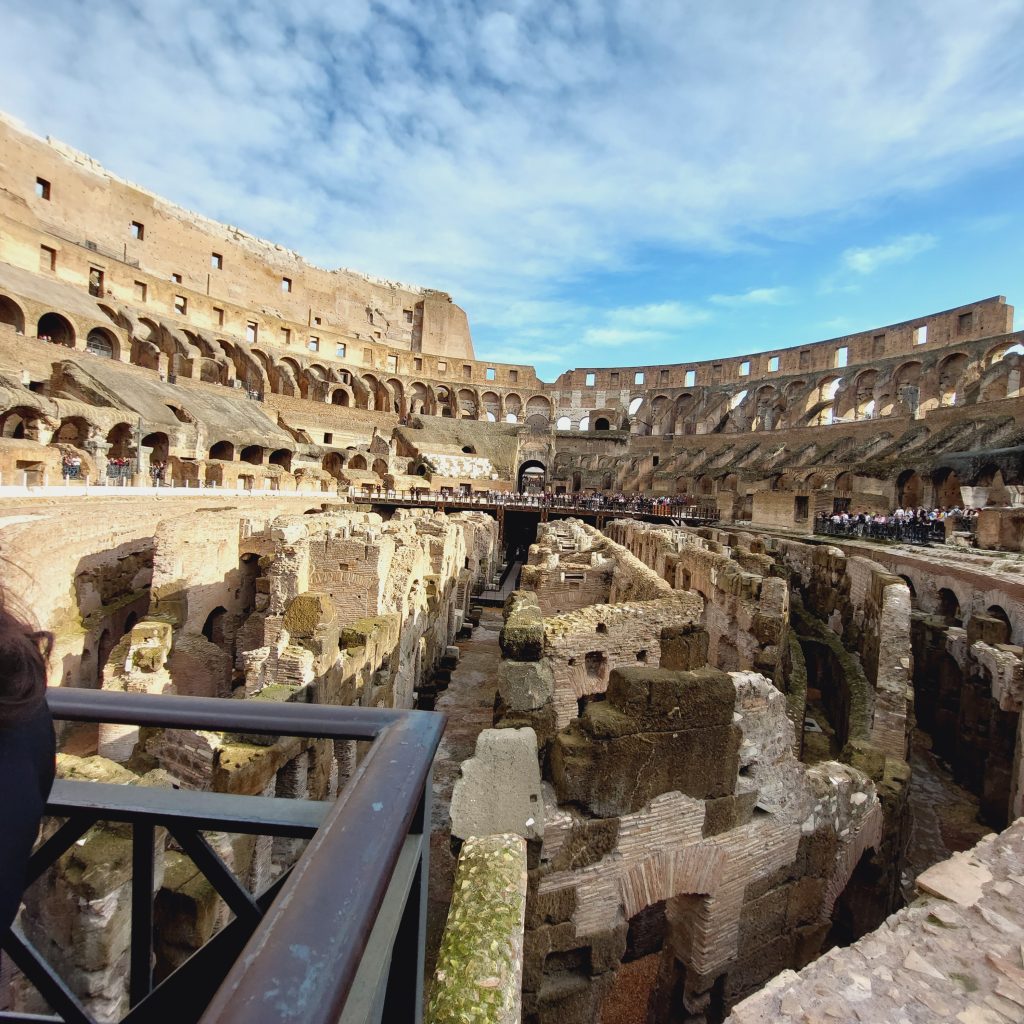
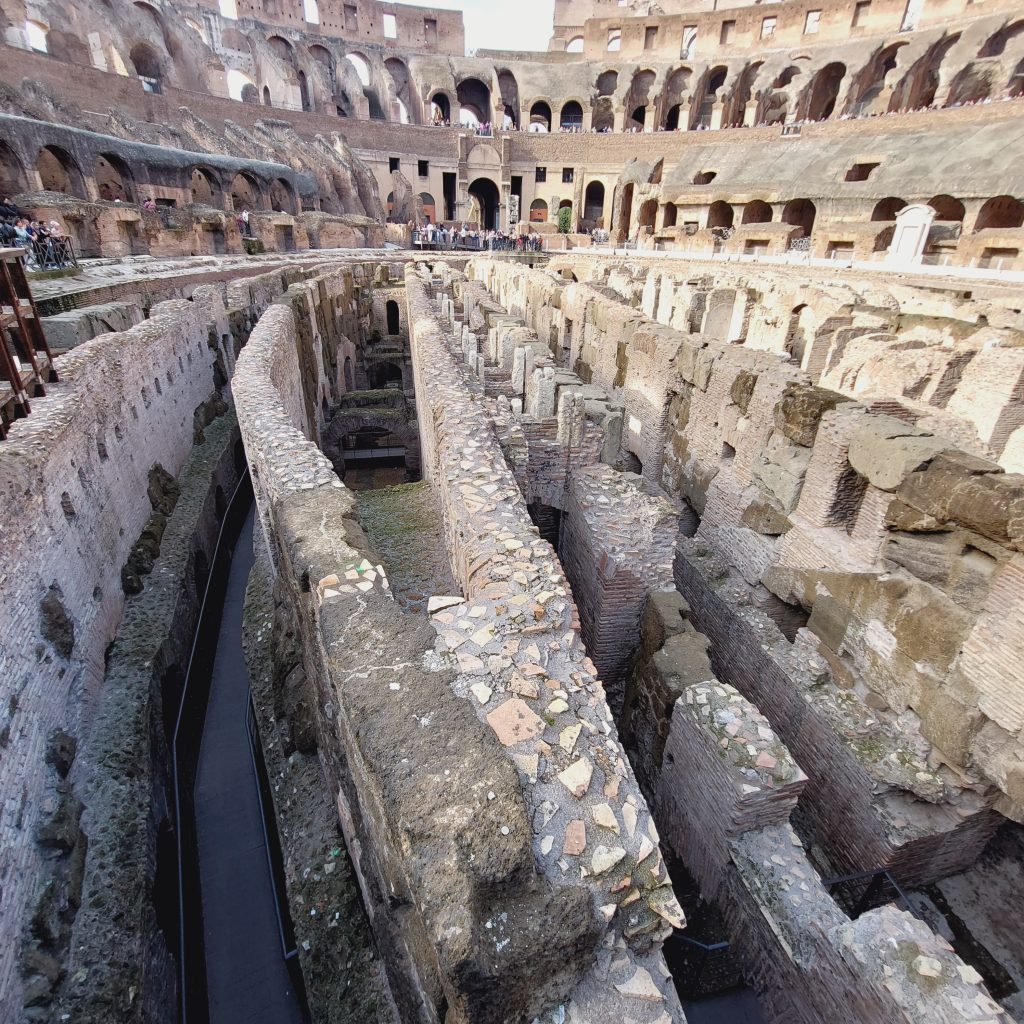
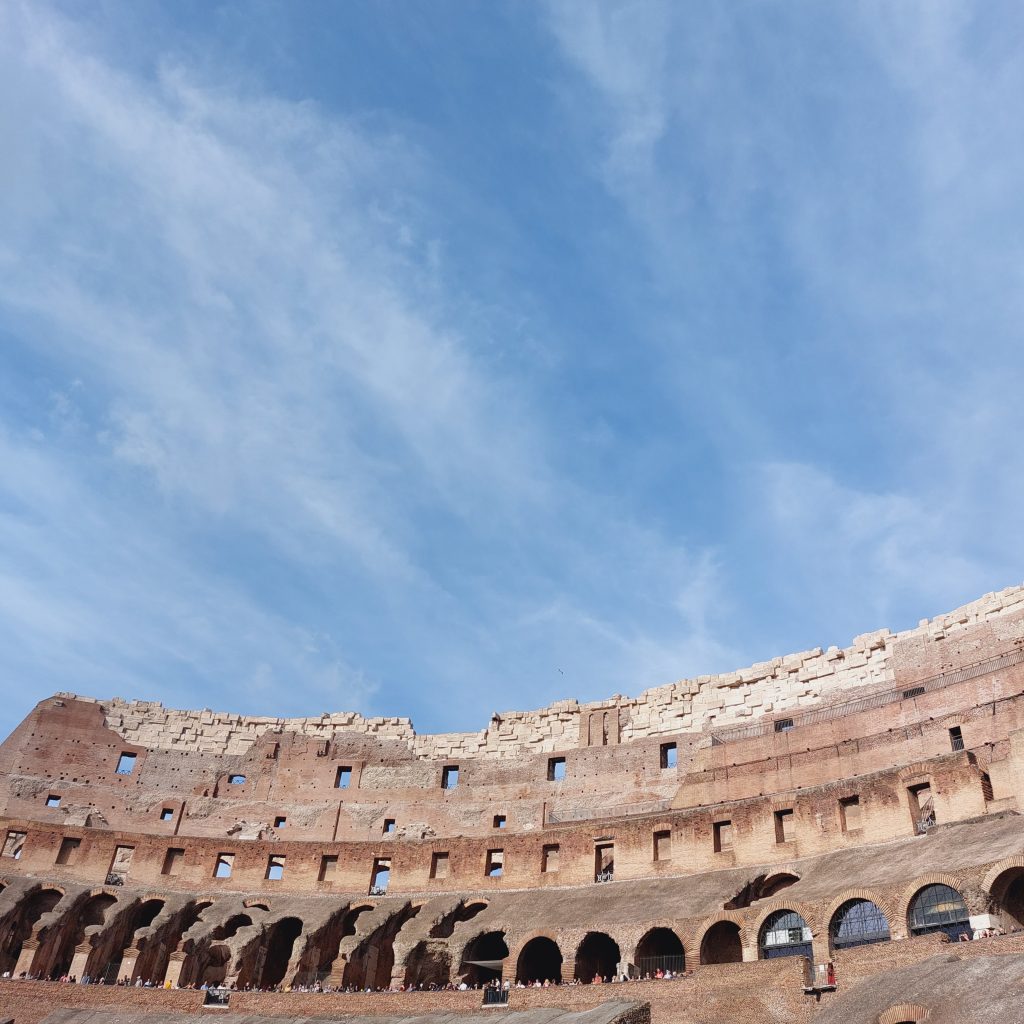
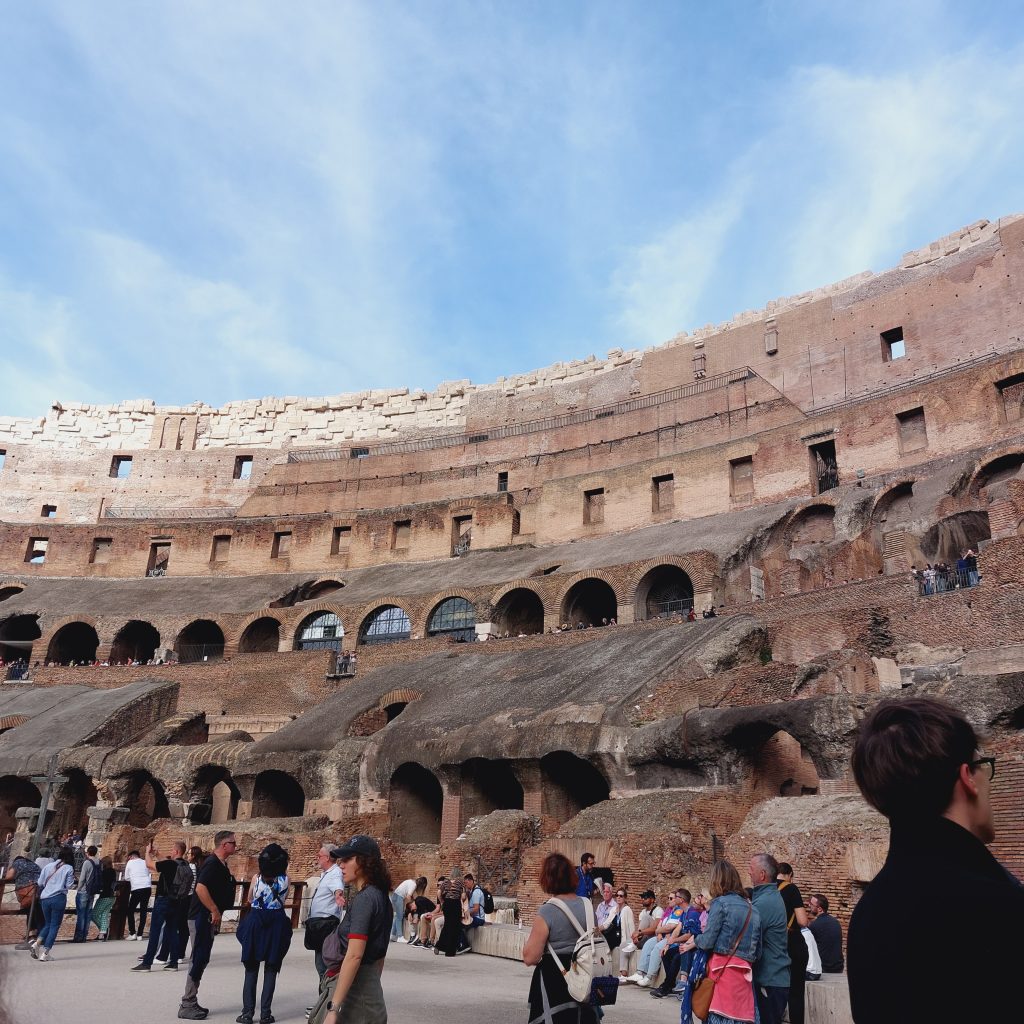
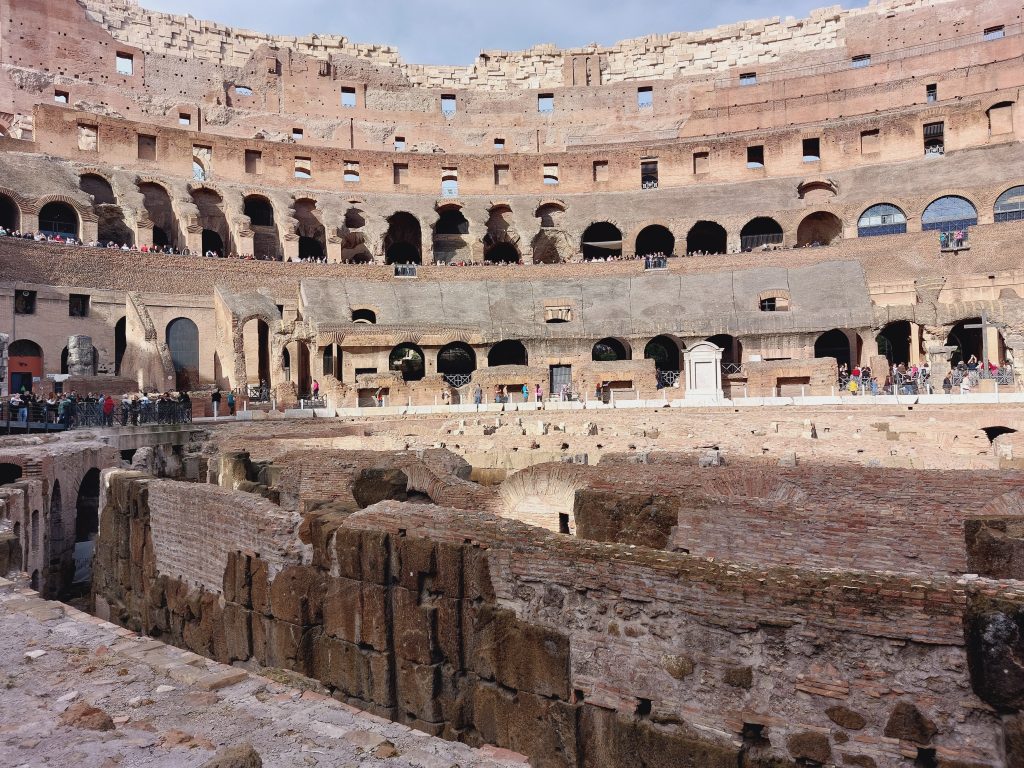
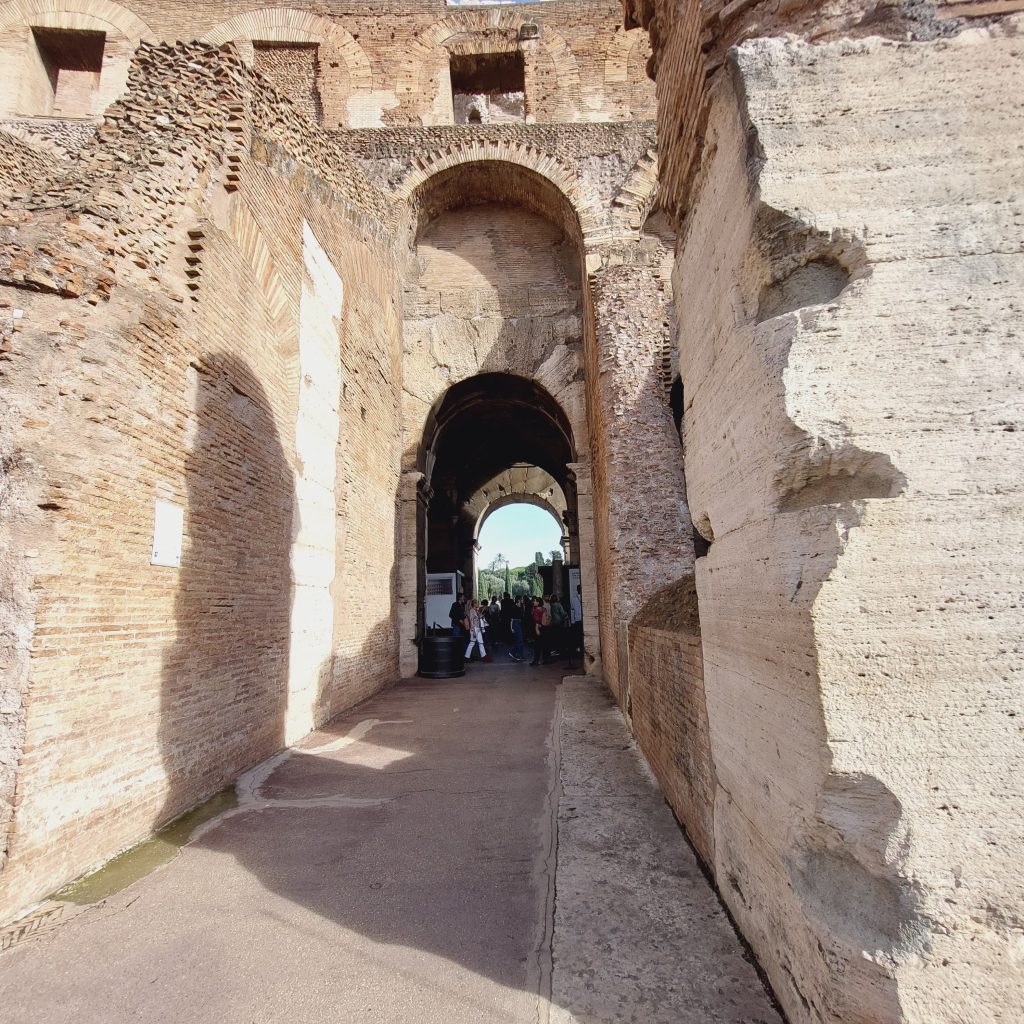
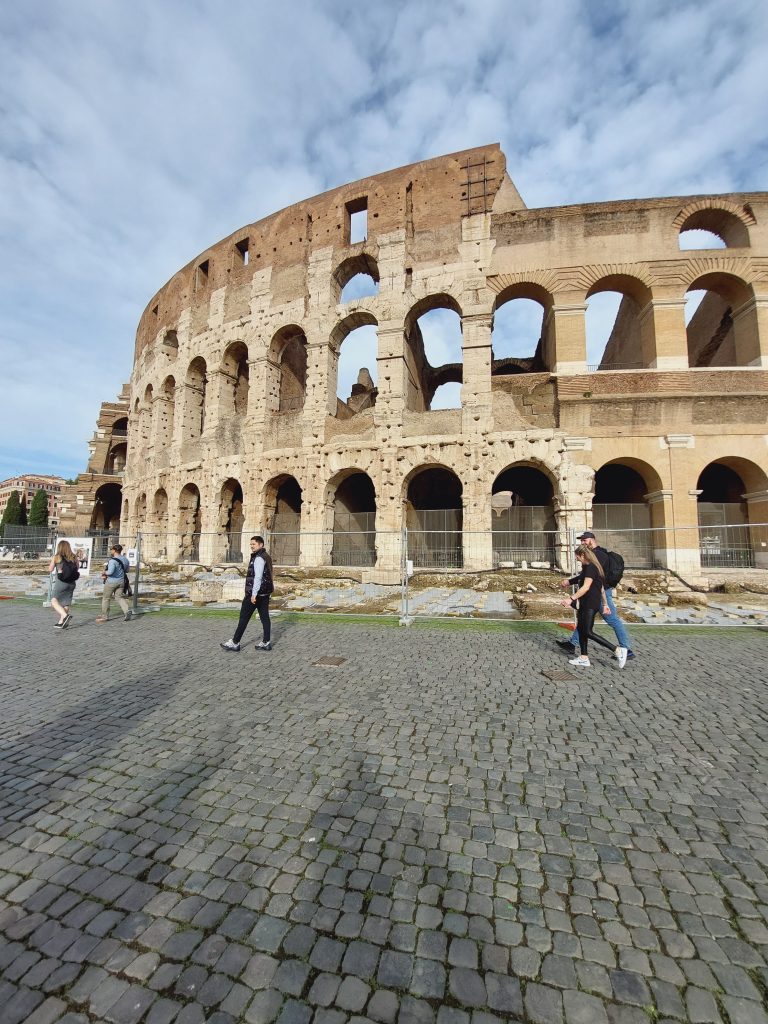
“Are you not entertained?” I wanted to shout the famous Gladiator film dialogue when I was inside the Colosseum. There is a strange feeling being in a place that has been around for over two thousand years, entertaining Romans with violence and pomp. Even though it is all bones now, it has persevered for eons.
This was the first landmark to greet me when I arrived in Rome late at night. Even in the dark, its amphitheatrical form was impressive to look at. Visiting the Colosseum during the day, offers a spectacular panoramic view of the interiors of the Colosseum. If you go with a tour guide, you get a wonderful history lesson. You will most likely spend up to three hours here with a tour guide.
Roman Forum and Palatine Hill
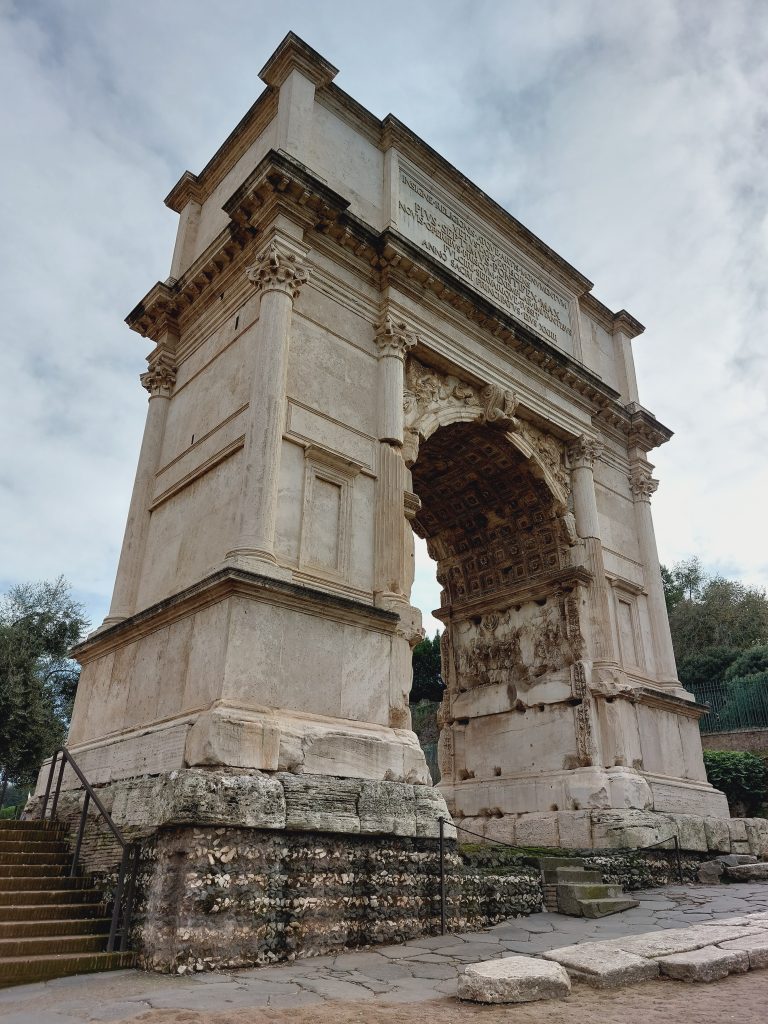
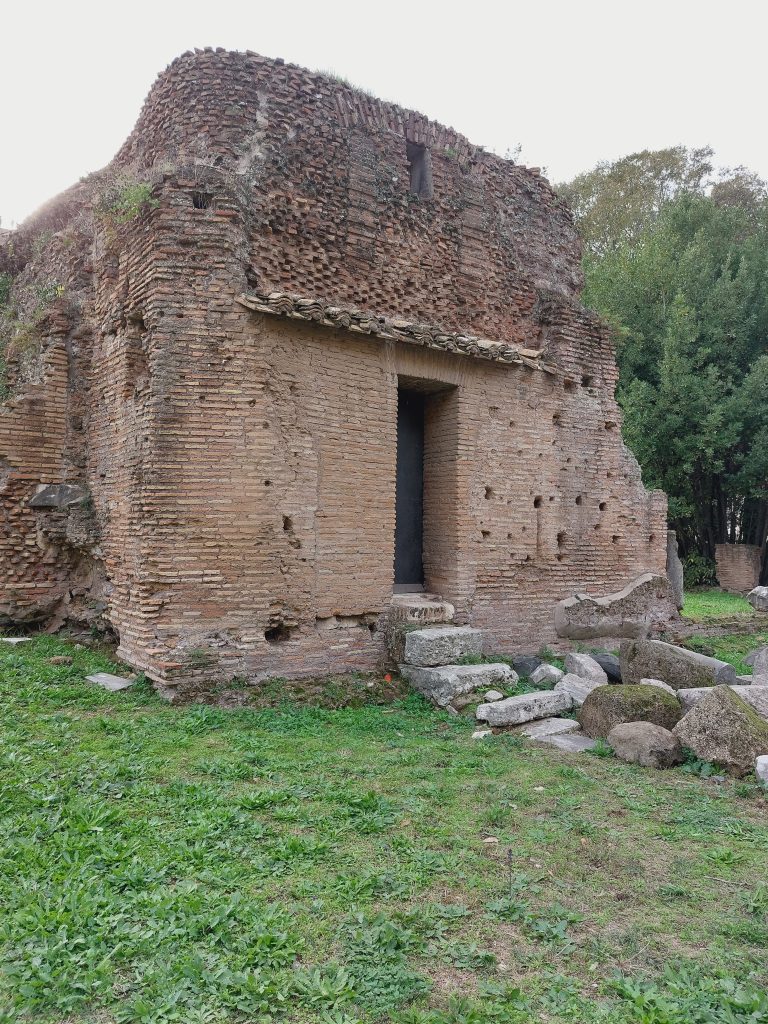
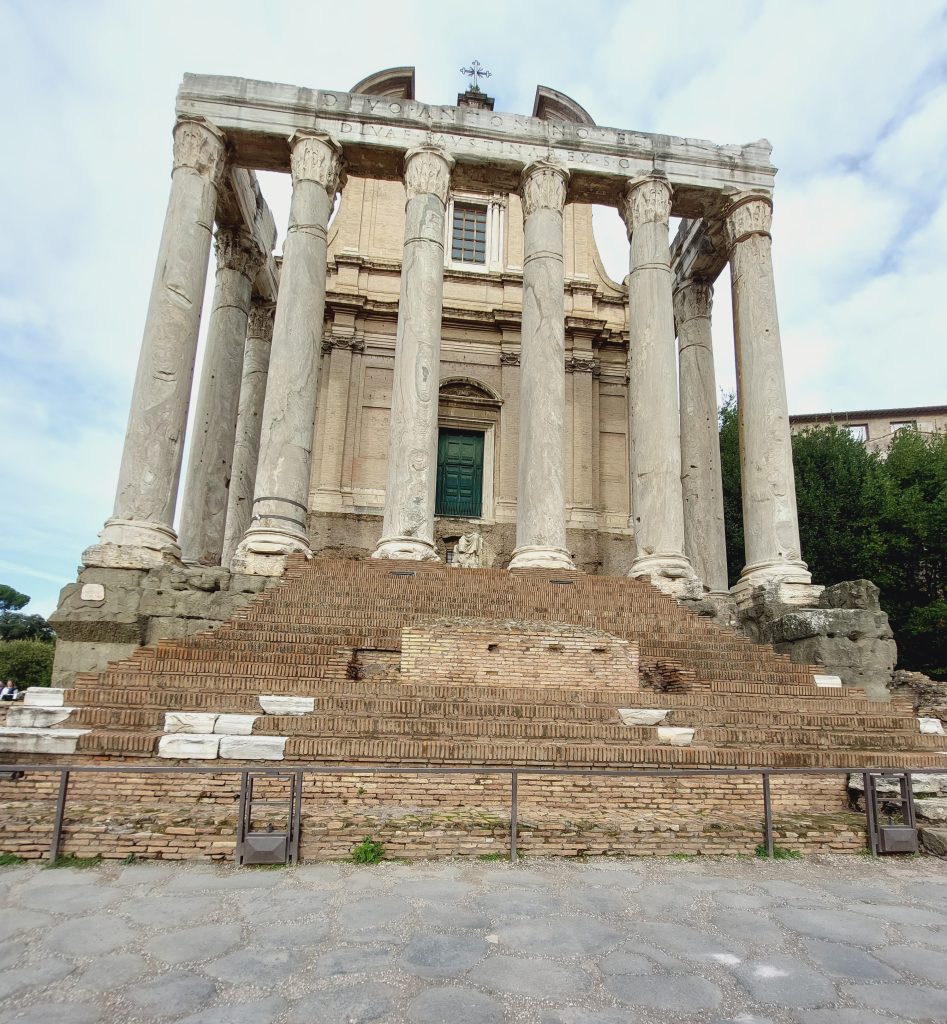
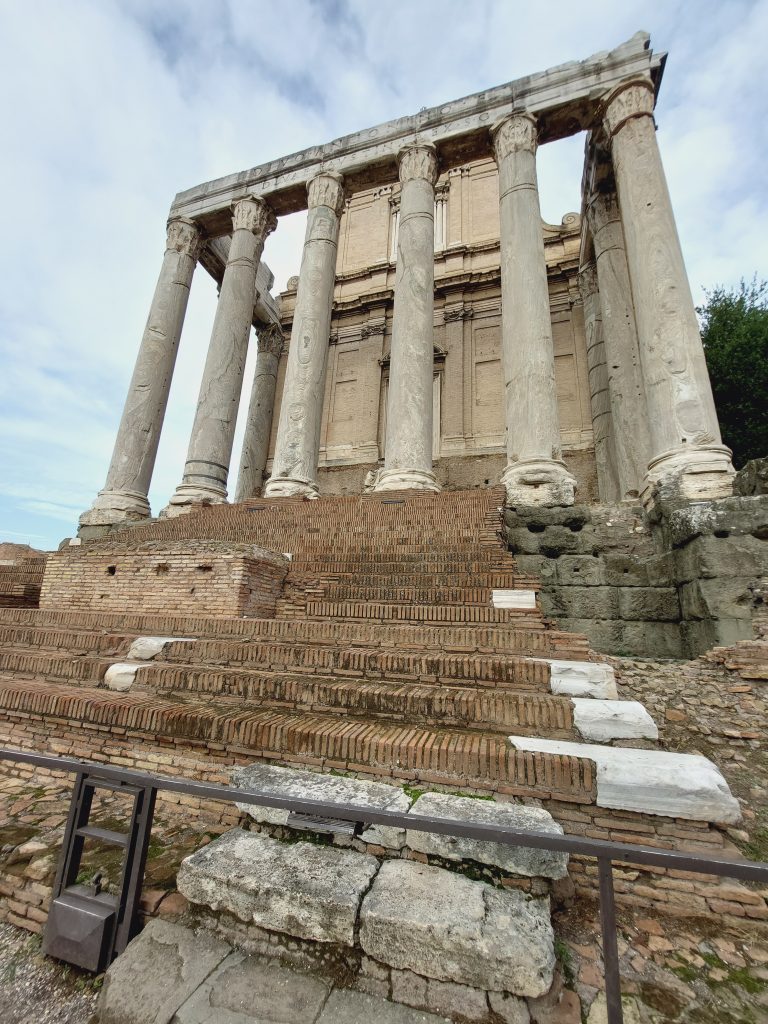
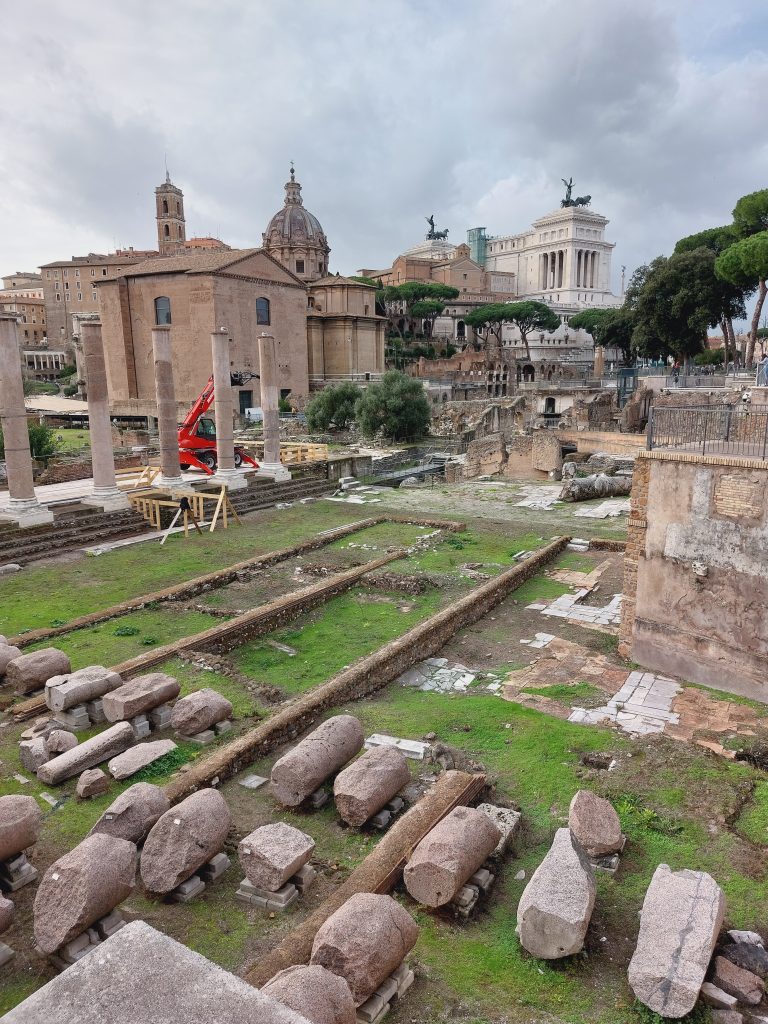
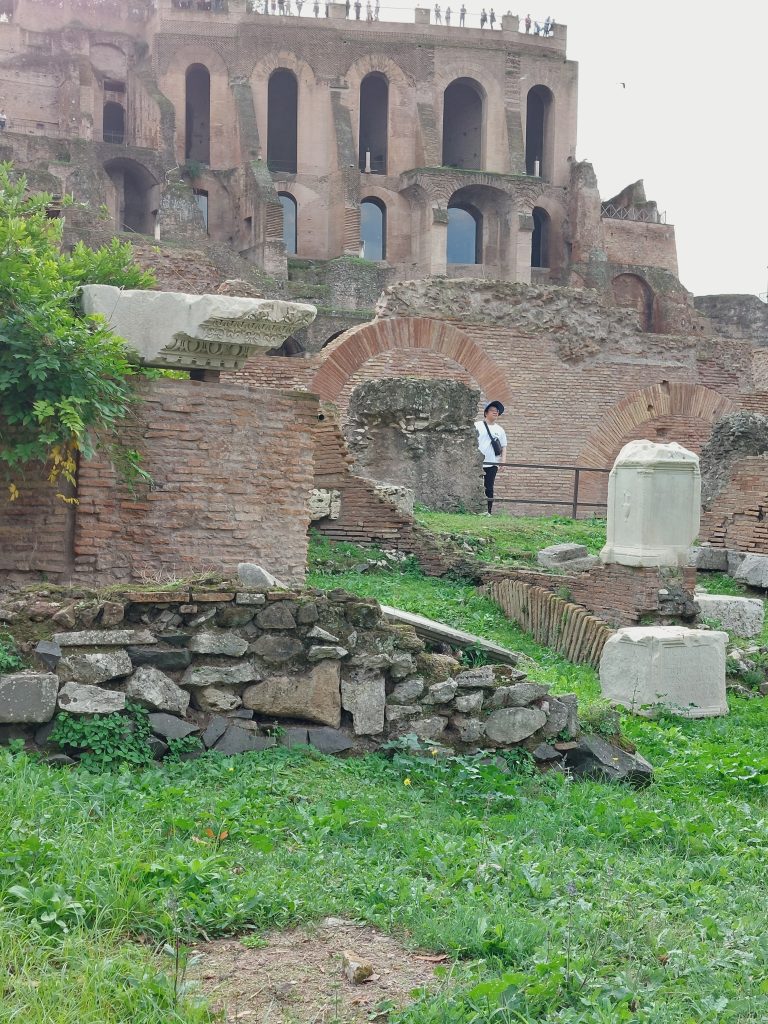
Just steps away from the Colosseum, lay the ruins of the Roman Forum and Palatine Hill. The Roman Forum used to be a marketplace and then later, a public space for ceremonial processions, legal trials, and gladiatorial matches. The Palatine Hill was once a residence for the emperors and nobility. If you were wealthy, you would have lived here, in palaces with beautiful gardens.
If you have a bit more time in your schedule, say an afternoon, then you should explore the Palatine Hill (after a visit to the Colosseum) in depth. It is also the birth place of Rome.
Oldest hospital in Rome
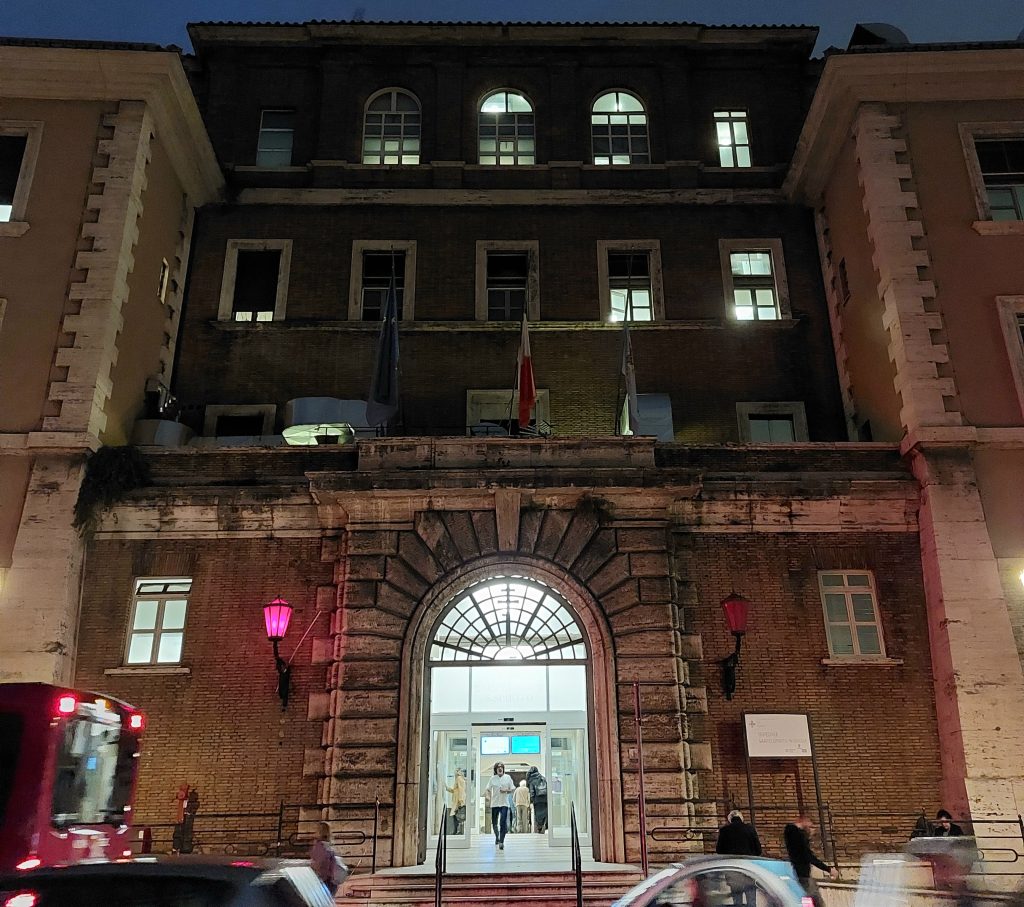
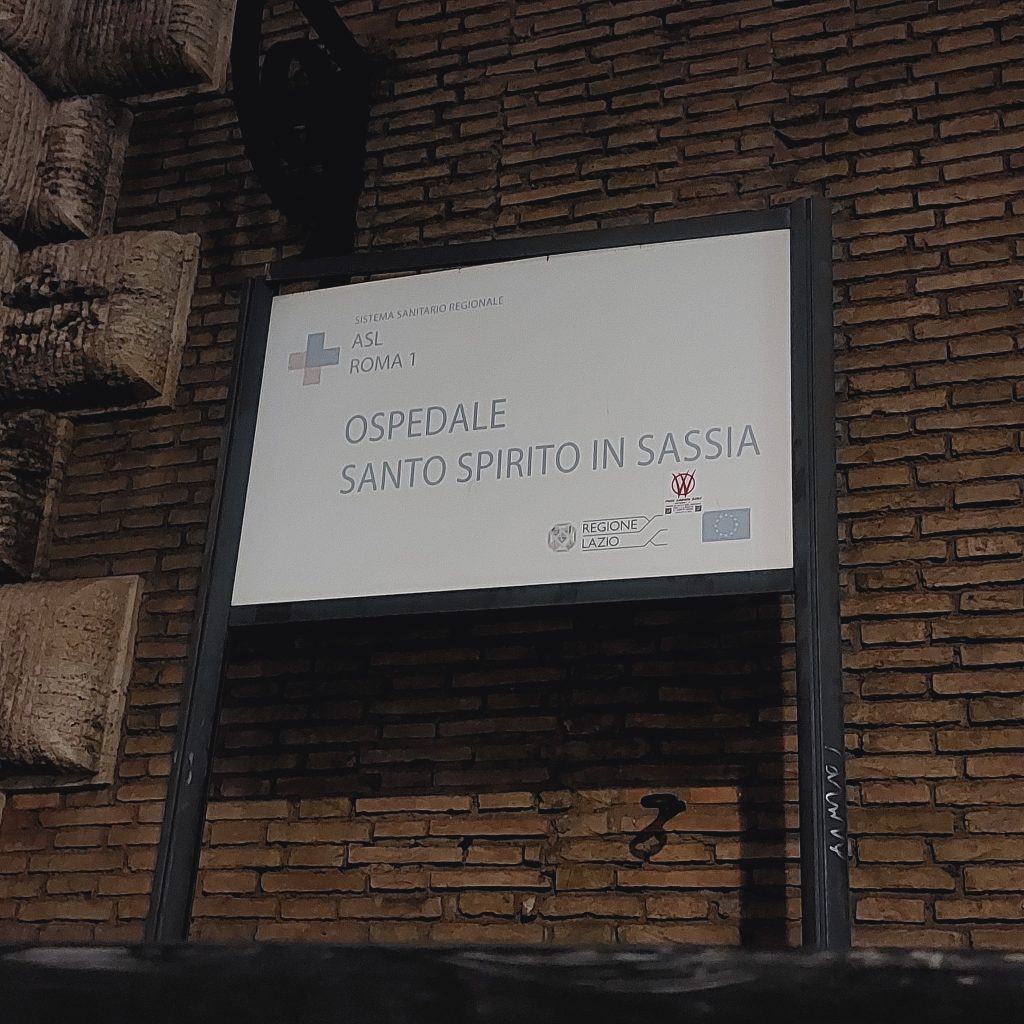
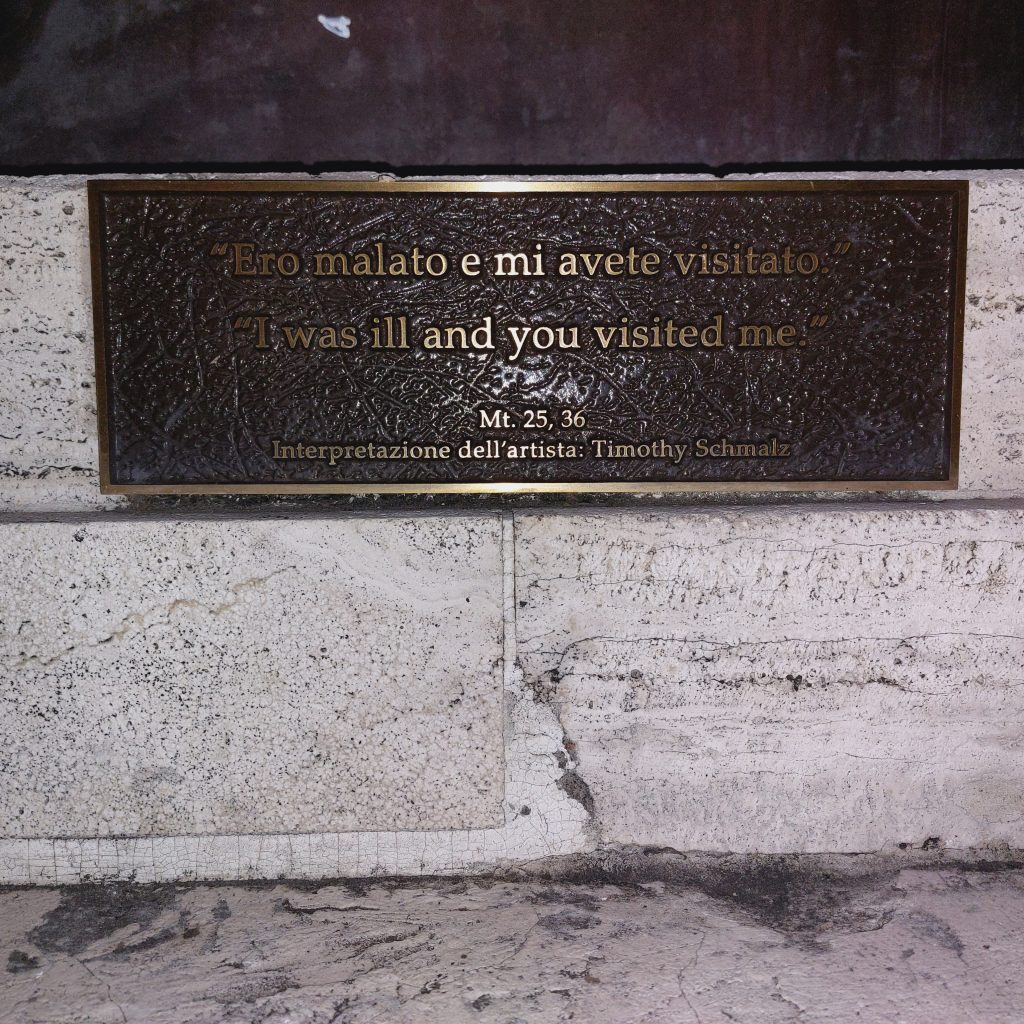
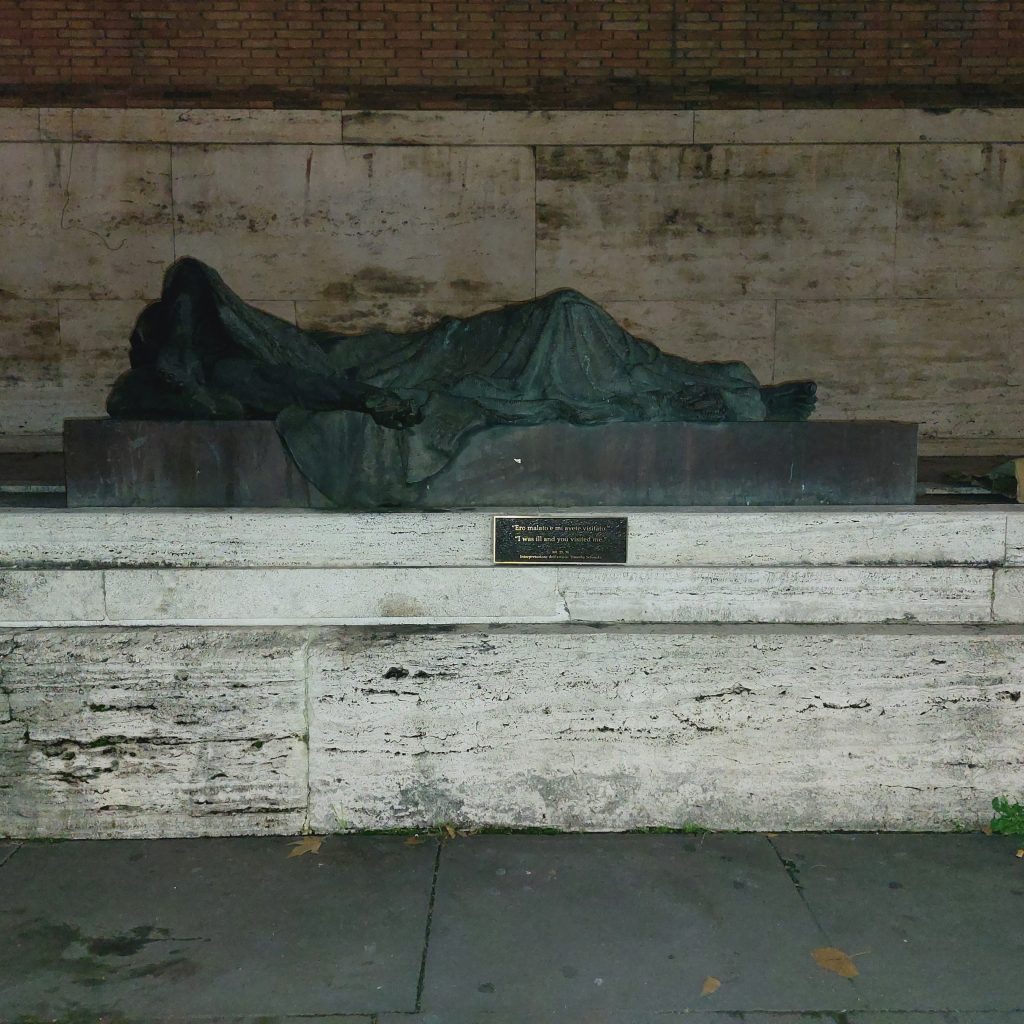
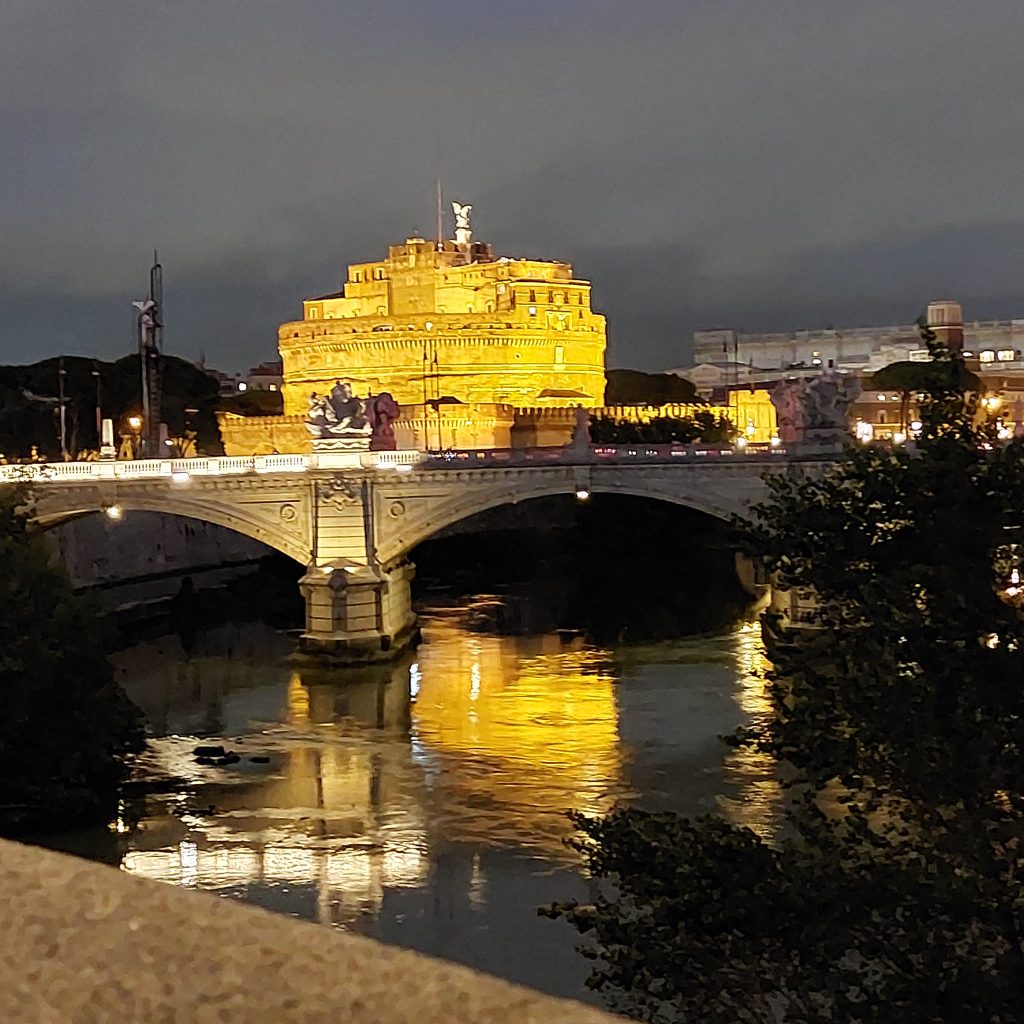
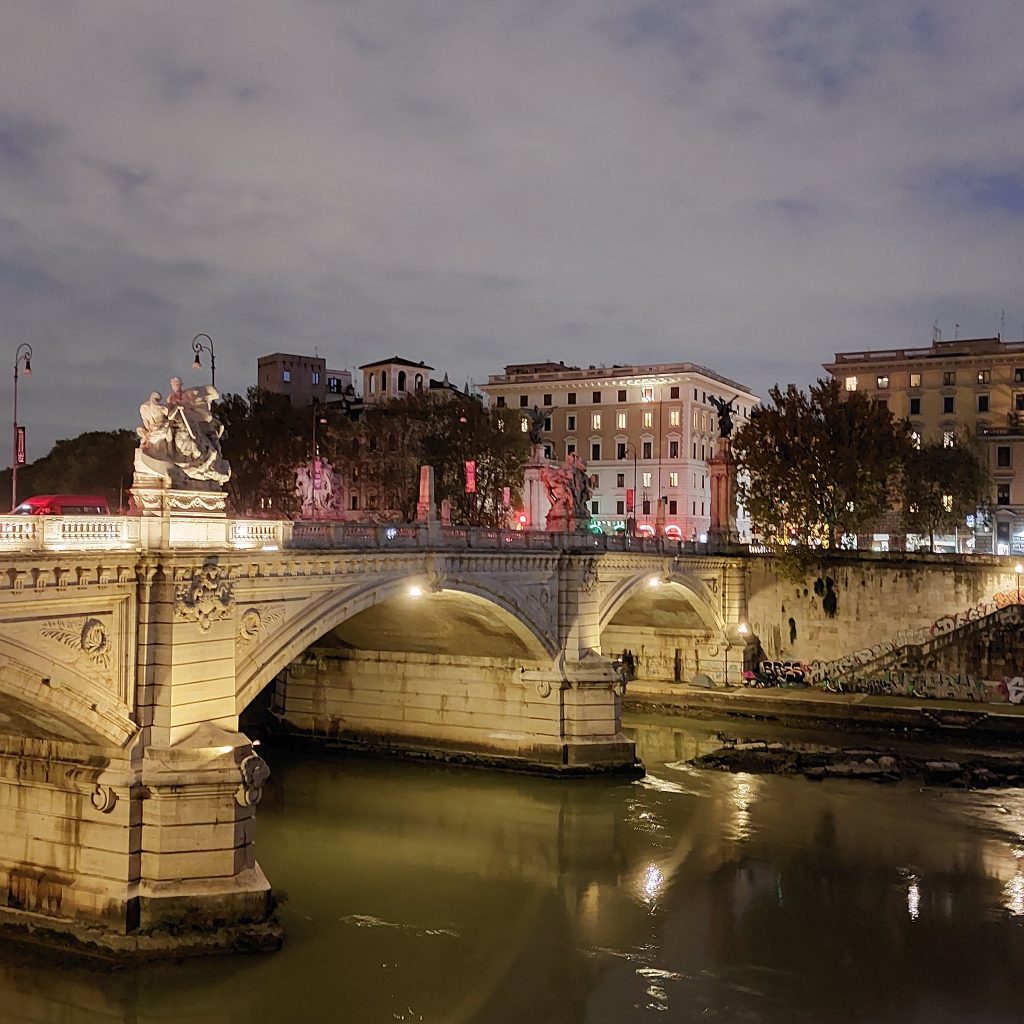
One of the relaxing things to do is walking alongside River Tiber in the evening, preferably after a visit to the Vatican city. There are some interesting discoveries to be made alongside the river. One of them is the oldest hospital in Europe, built in the 12th century. This was a great find for me. Santo Spirito in Sassia was built in the 12th century after Pope Innocent III had a nightmare about the city’s unwanted babies. He decided to build a hospital for the poor, needy and the unwanted babies. It became a place where women can anonymously leave their babies to be cared for by the hospital. Outside the hospital, you can see a bronze statue depicting a poor and needy lying on the ground, with a plaque next to it that reads: “I was ill and you visited me”.
To this date, it remains a functioning hospital.
The Pantheon
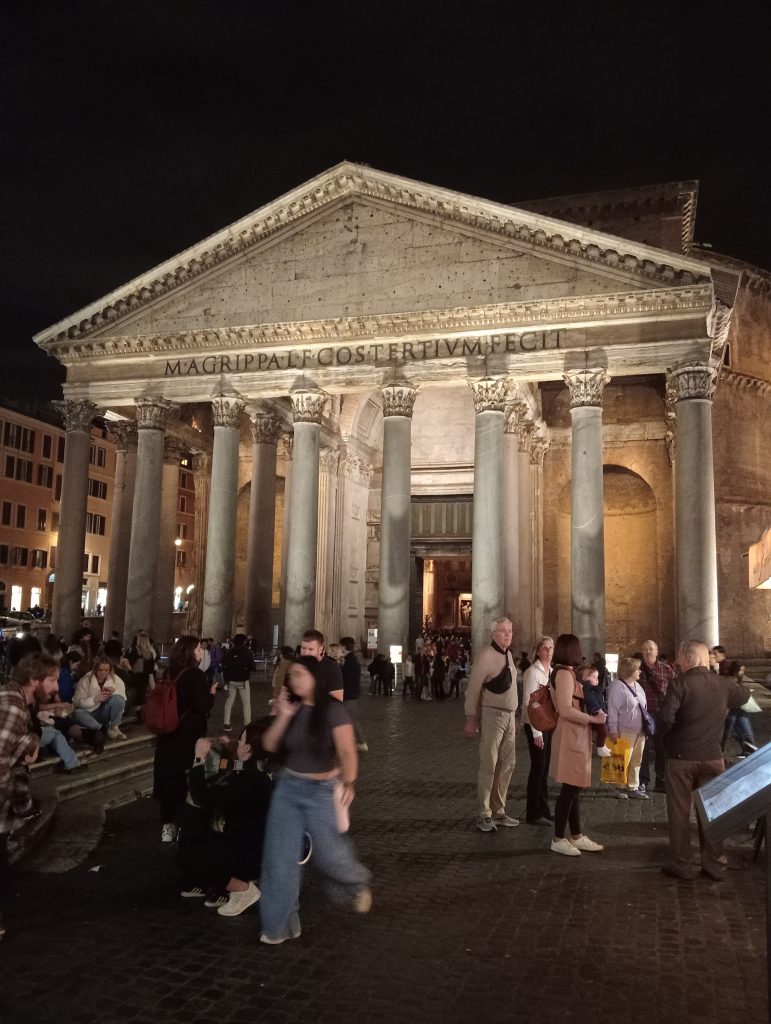
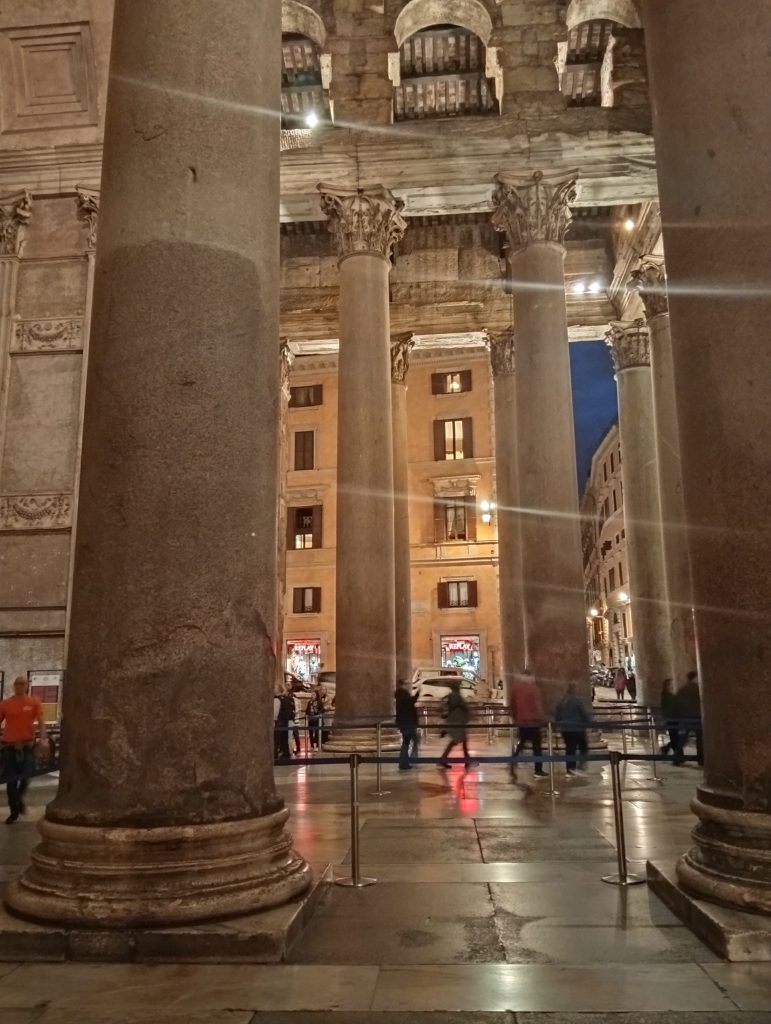
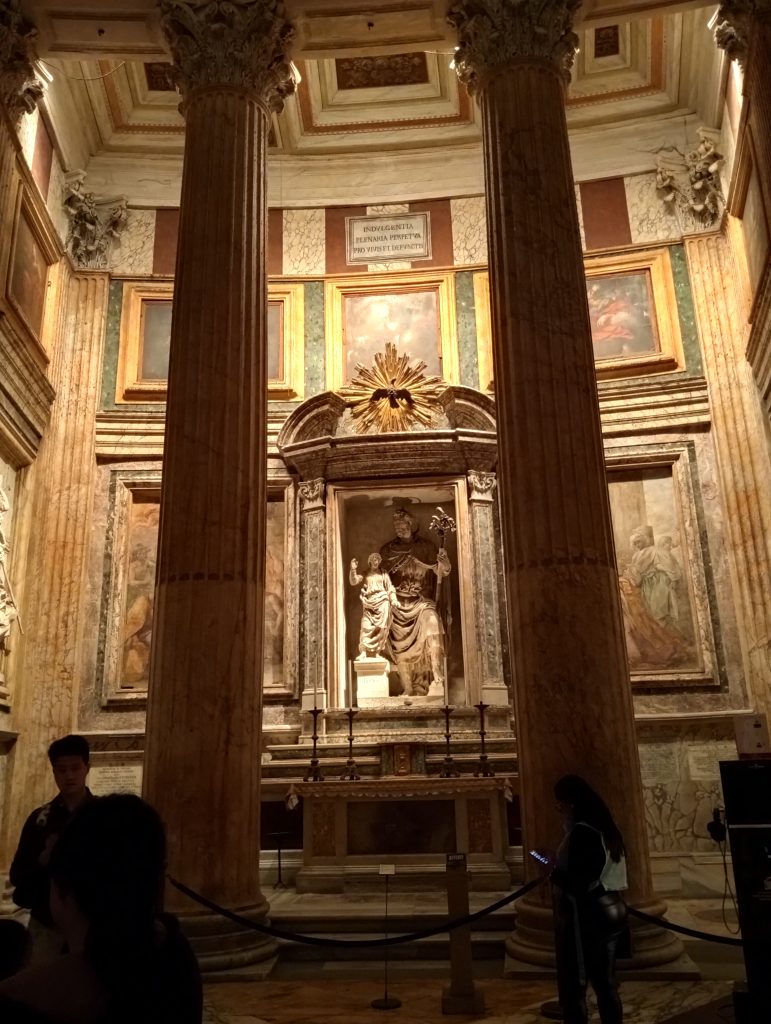
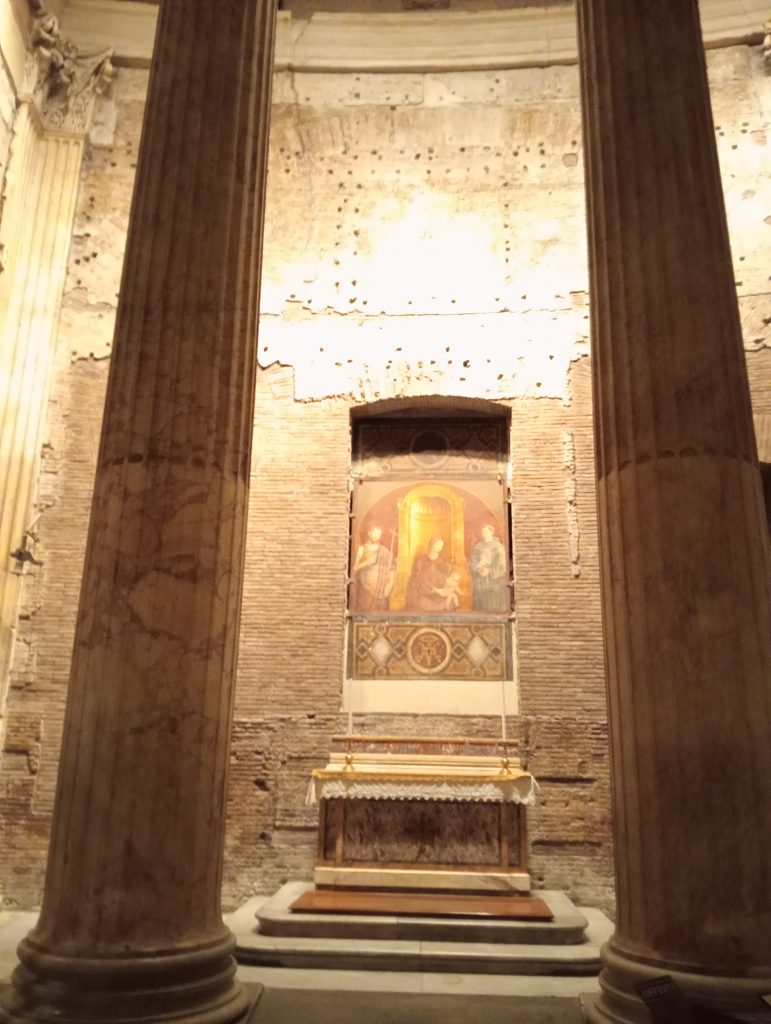
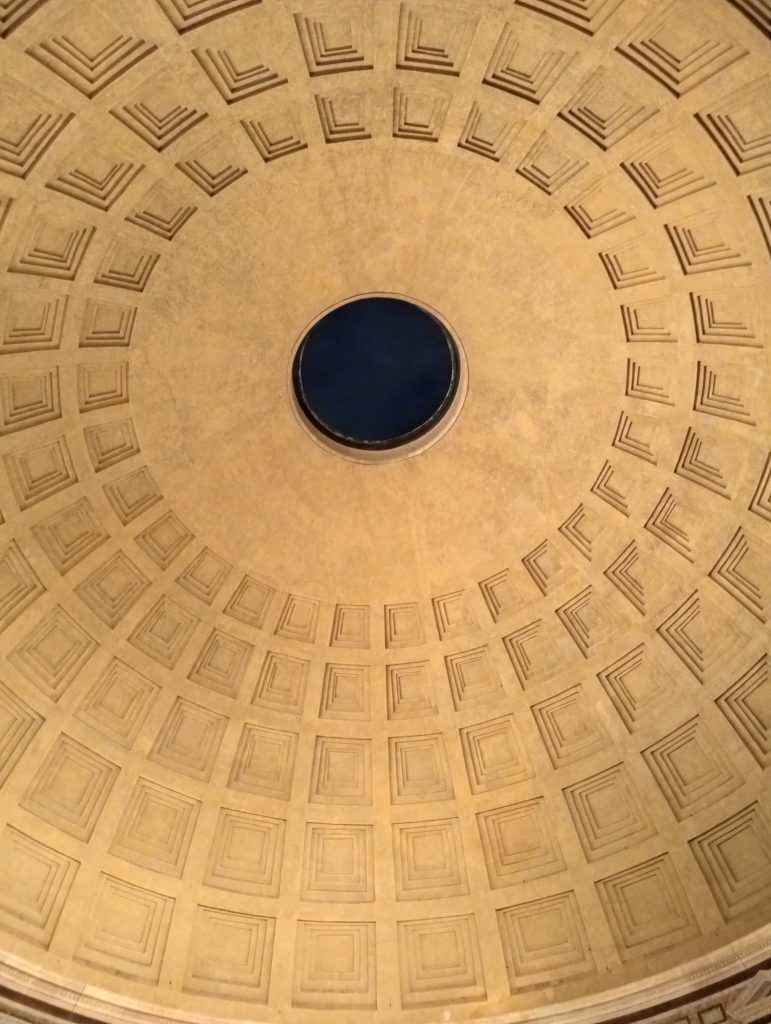
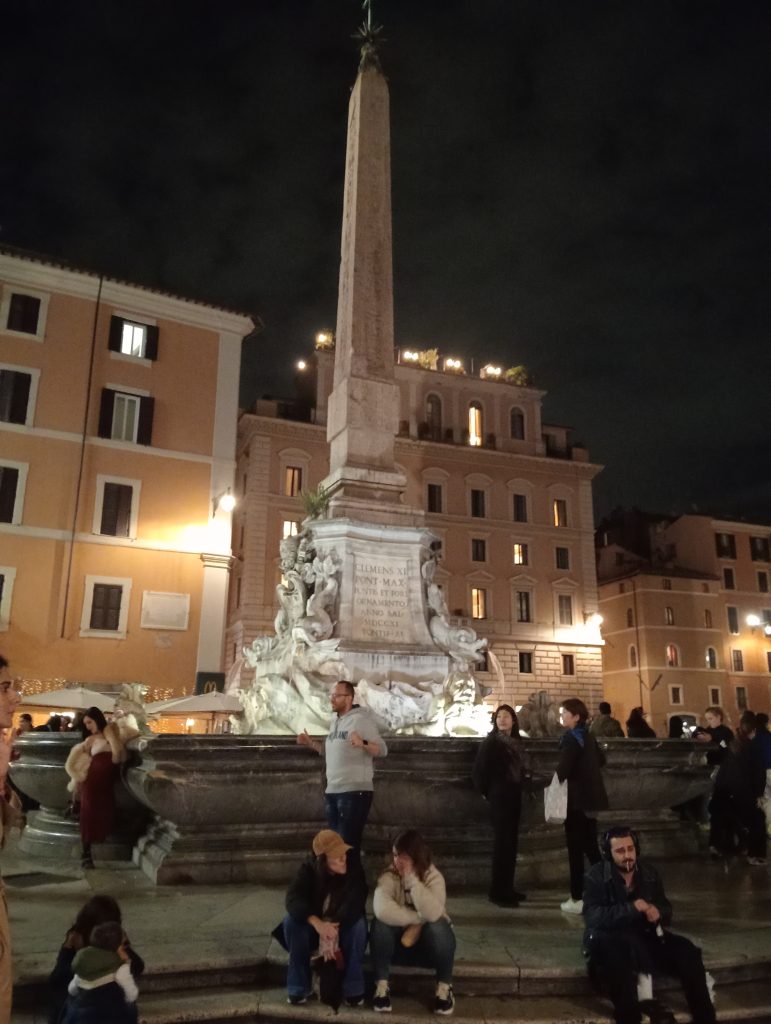
I didn’t take a picture from the back of the Pantheon, where it’s ageing frame is held up by a constructed building. Being around for over two thousand years will earn it a zimmerframe equivalent. It was originally built as a temple for gods. Later, it embraced Christianity, and became known as the Church of Santa Maria ad Martyres. One of its spectacular features is the circle known as the oculus in the domed ceiling (see image 5). This has no glass and is open. So, natural light can flood through, and so can rain. While it isn’t the tallest dome, it is considered to be the oldest in the world (but do correct me if I am wrong).
The Church of St. Ignatius of Loyola at Campus Martius
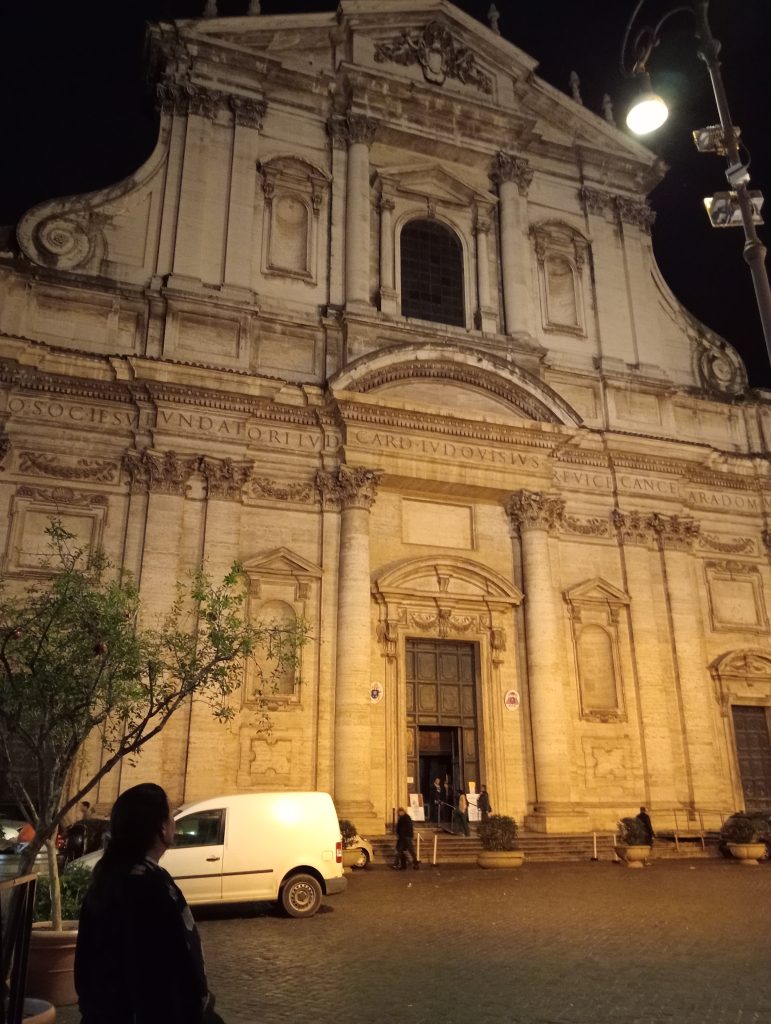
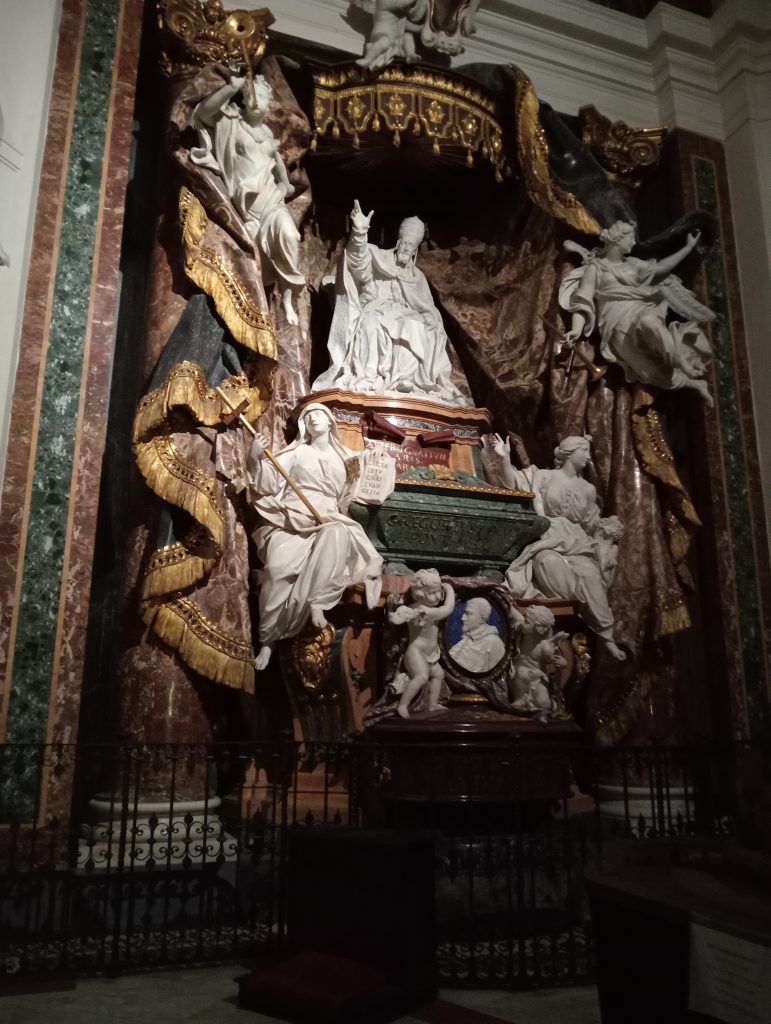
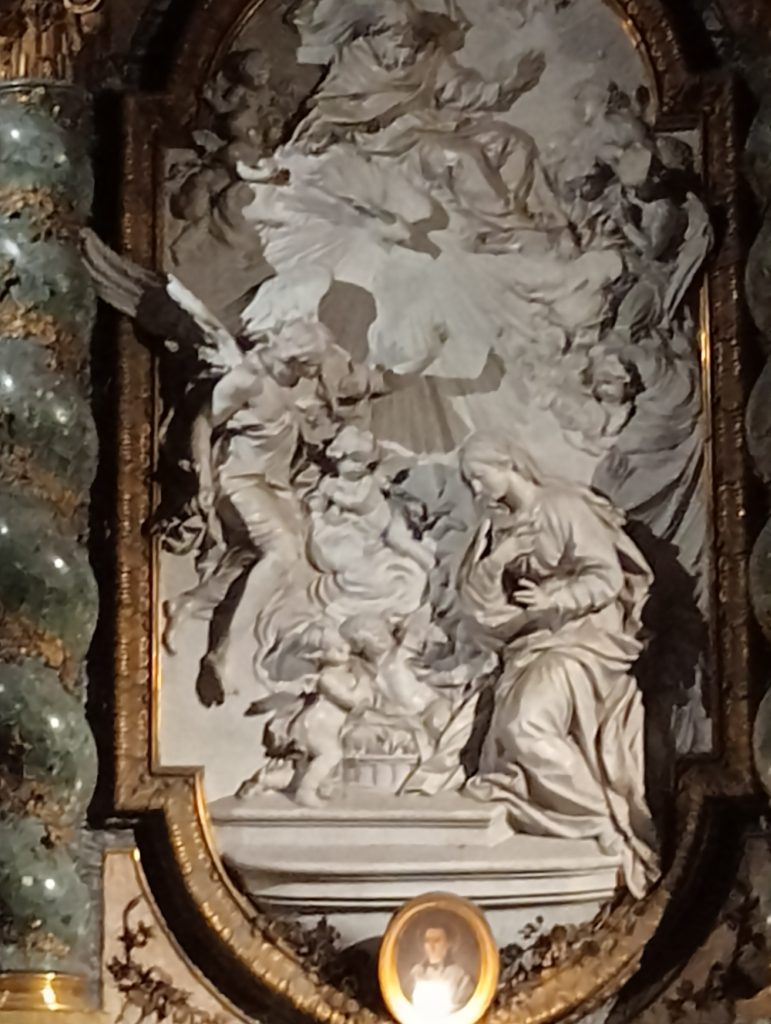
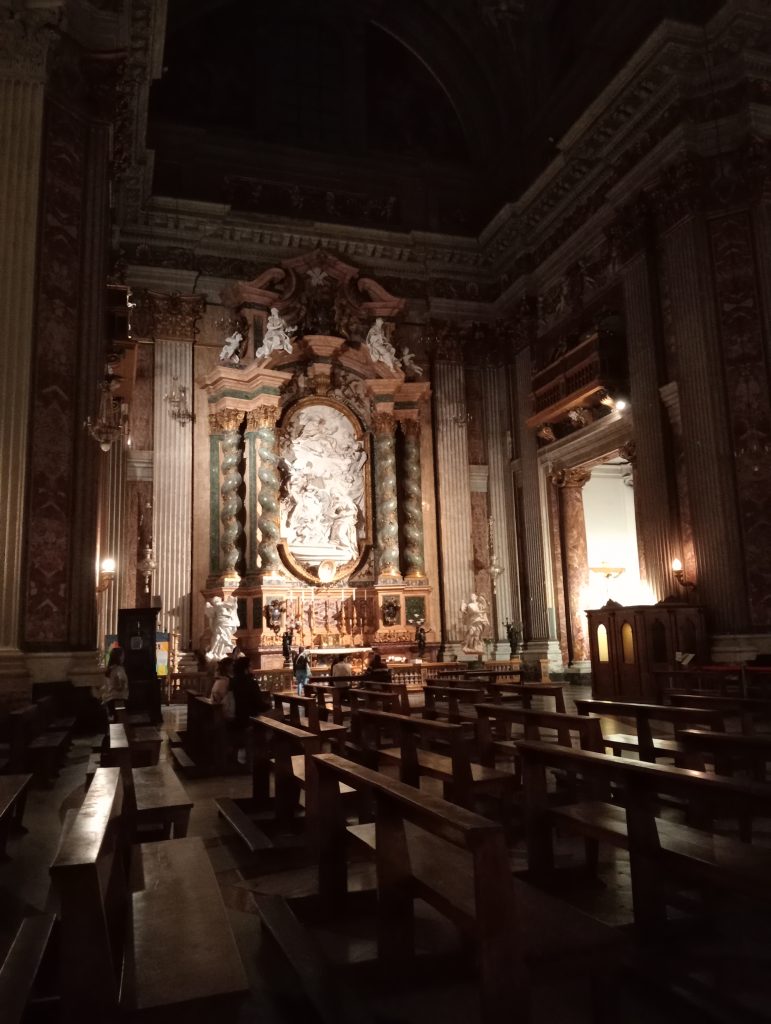
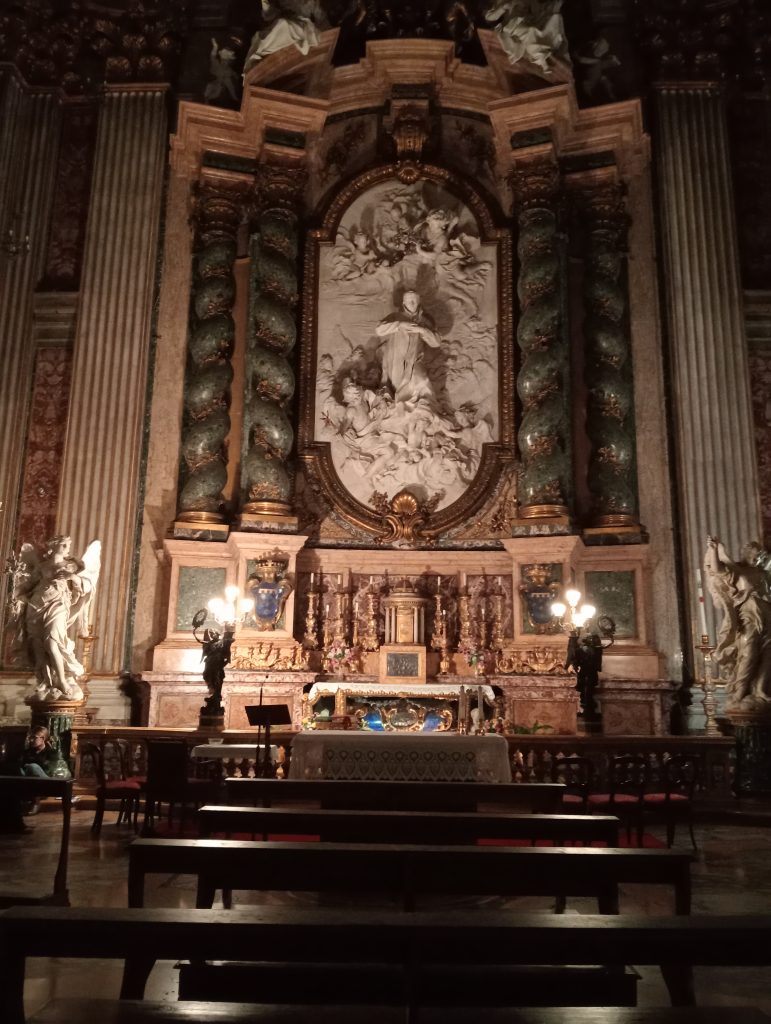
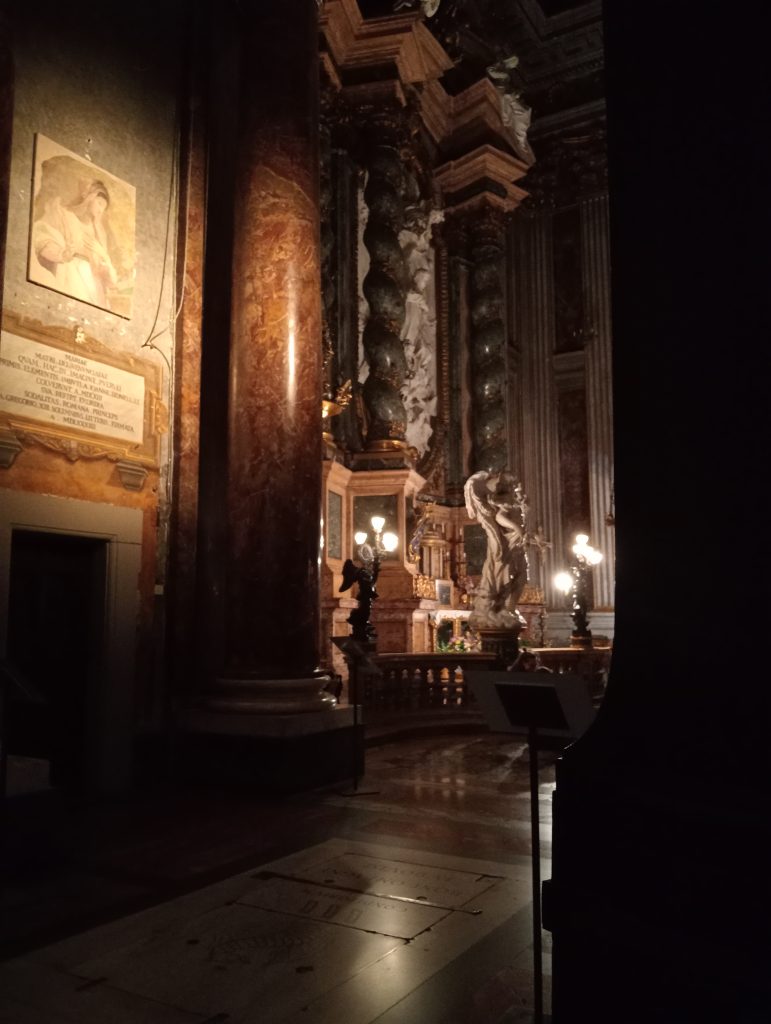
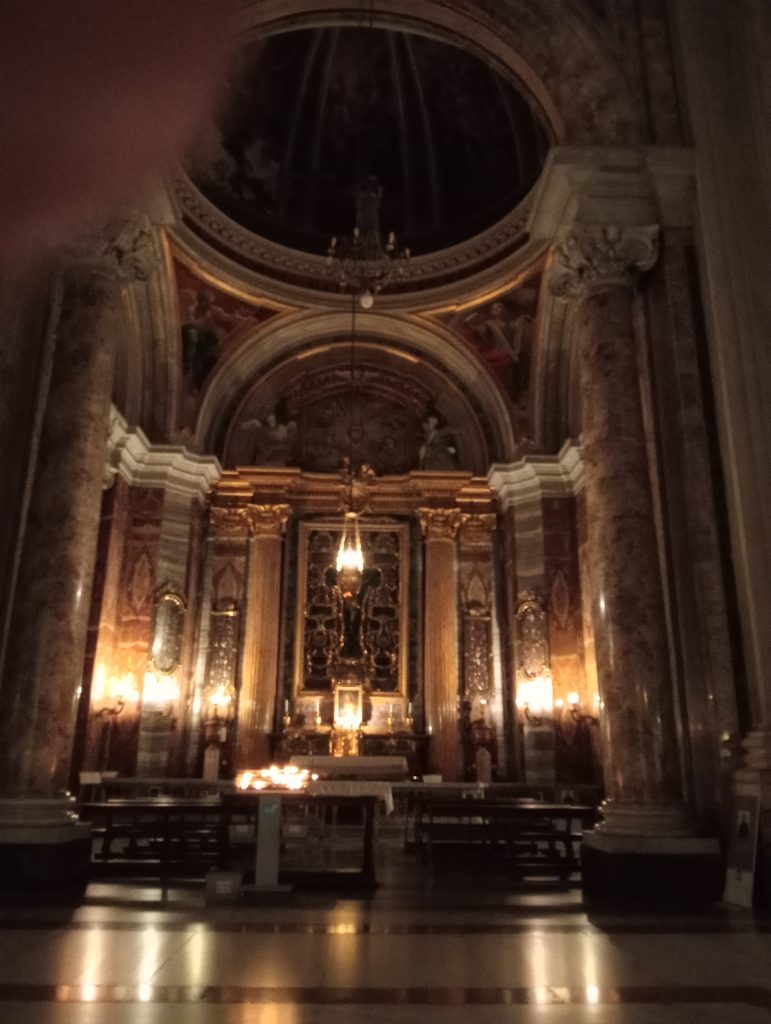
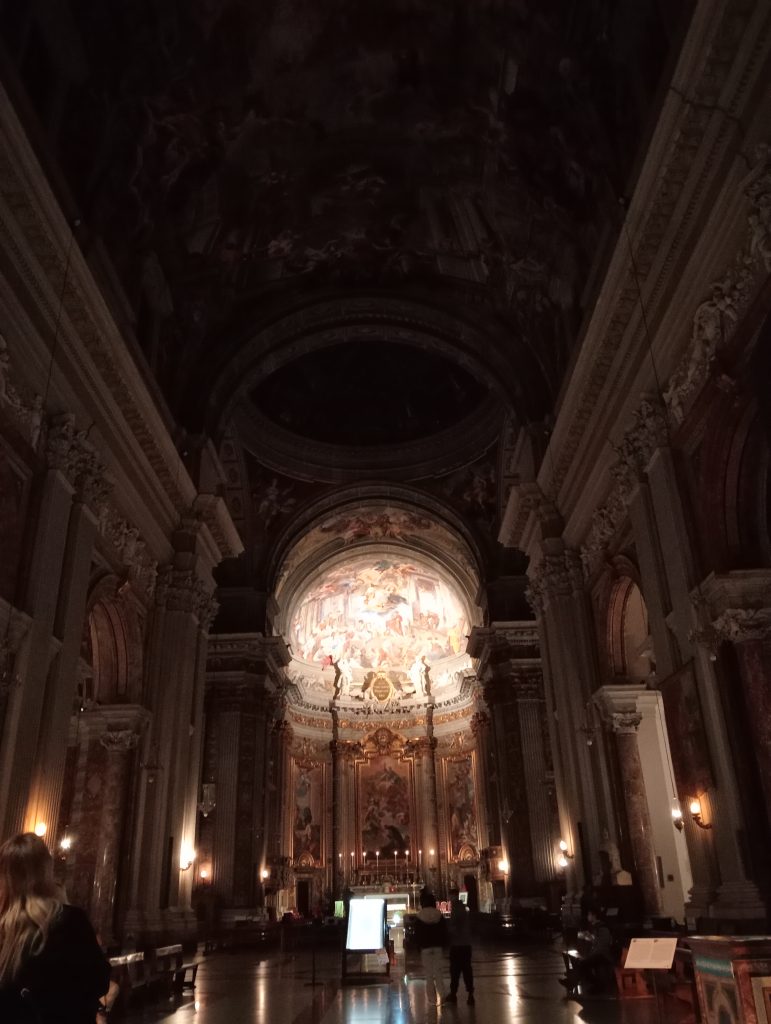
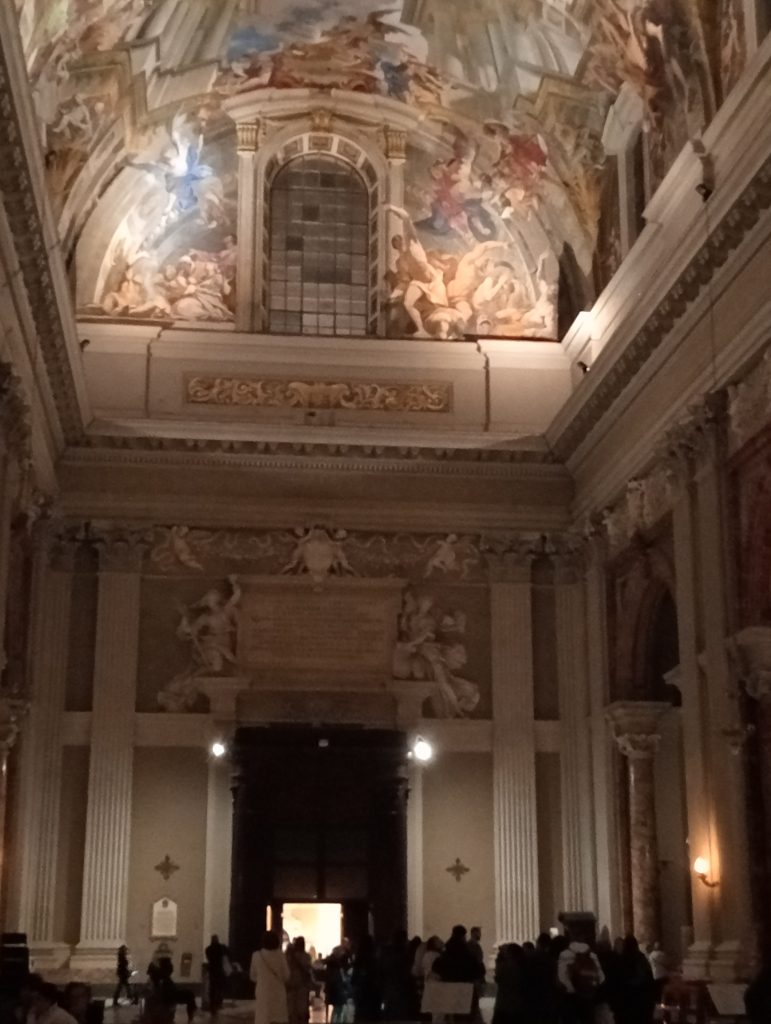
If you have some spare time, you should pop inside this church. It is very near to the Pantheon.
It is an incredibly beautiful and peaceful church, bedecked with jaw dropping baroque artwork. Some parts of the church is shrouded in darkness, as if it is done deliberately to keep the lights out. After a long day of sightseeing, this is a good place to pause and catch your breath.
There are free guided tours, operated by volunteers. If you are interested in learning about its history, have a look at their website here.
Afterthoughts
So, I have covered some major landmarks, as well as some places of interests. If you are here for a short stay, try not to squeeze in everything as it might just feel too overwhelming and rushed. Do factor in travel time between places and time spent in those places. Try to see one or two sights per day; one in the morning and one in the afternoon.
But if you suffer from a serious case of FOMO, then keep the last day free for hop on hop off bus tour. This is a quick way to see all the sights that you have missed.
ANY OTHER BUSINESS
Airport and Roma Termini train station
The airport is some distance away from the city centre. You can get to the city centre from the airport either by taxi or train. Taxi for one person (in November) cost me 75 euros and took around 40-50 minutes.
Alternatively, you can catch the train from the airport to Roma Termini station (main station in Rome). Depending on where you are staying in the city centre, you can walk from the Roma Termini station to your destination. However, I’d advise you to take caution and get a taxi from the station. Taxi can cost around 10 euros to cover distance under 10 minutes.
Travel pass (to use on bus and metro)
You can get a travel pass for however many days you are staying in Rome. The pass is available for single use, 24 hours, 48 hours, 72 hours, and weekly (to name some). You can buy your pass from a vending machine at any metro station. See this website for prices and information.
How to spot a fake gelato
Do you know the difference between a gelato and ice cream? While they both share two ingredients: cream and milk, gelato uses more milk than cream. Gelato is churned slowly and served at a slightly warmer temperature, resulting in a soft texture.
When you are inside a shop, look at the colour. Gelato should not be brightly coloured, but have a muted colour palette instead. Good quality gelato is made with all-natural ingredients and no artificial colourings. The gelato inside a metal tub should be even layered and not arranged in huge mounds. As required by law, gelateria are required to show ingredient list. If there are ingredients like vegetable oil or artificial colours, then please walk away.
You can find a genuine gelateria away from the tourist hotspots.
About cappuccino
In Italy, cappuccino is considered a morning beverage, to be enjoyed with breakfast. Ordering cappuccino after lunch or dinner, might raise a few eyebrows. A local told me that cappuccino is a milky drink that can cause digestion issue if drunk after lunch/dinner. According to her, nobody wants to feel bloated or gassy. Fair point. Instead, espresso or macchiato is drunk after an afternoon/evening meal.
I hope this helped. Wishing you a wonderful Roman adventure. Ciao!
